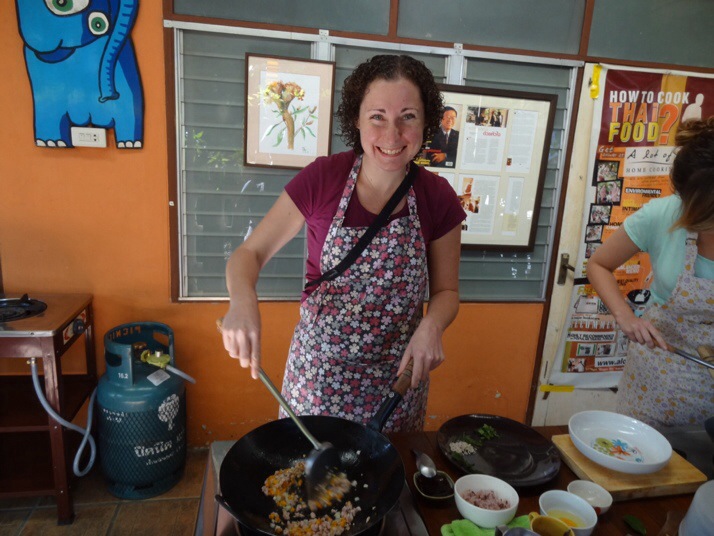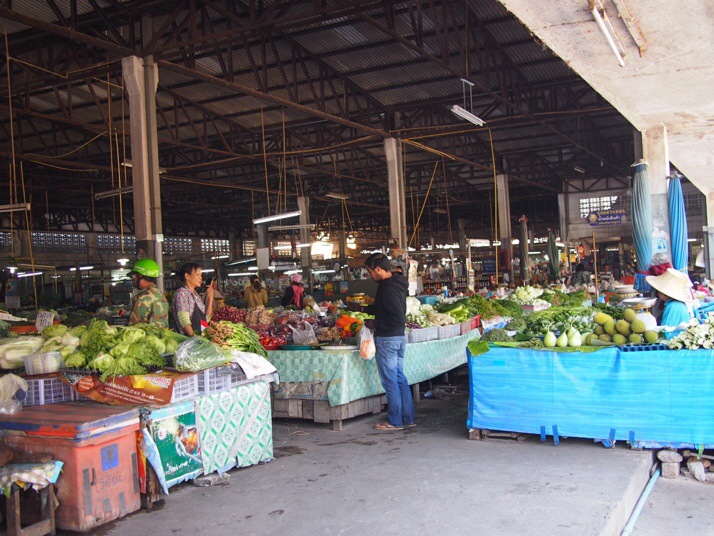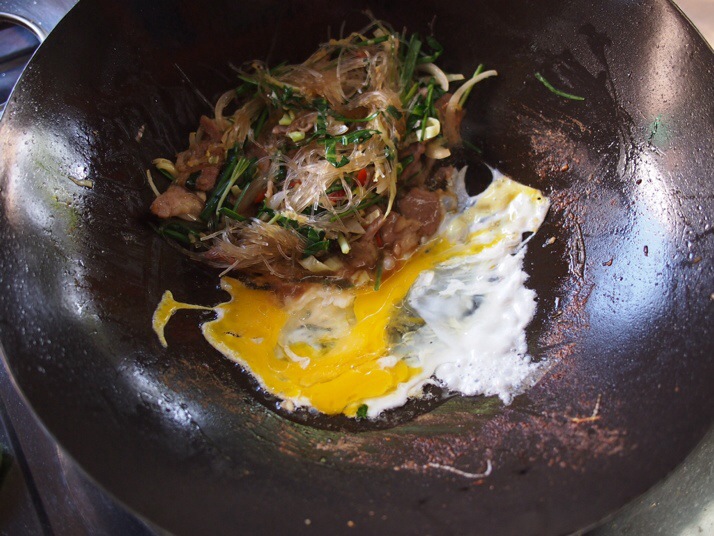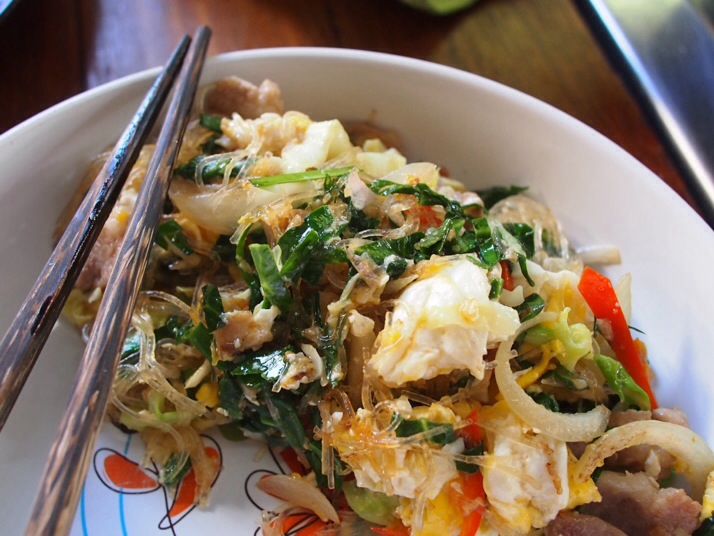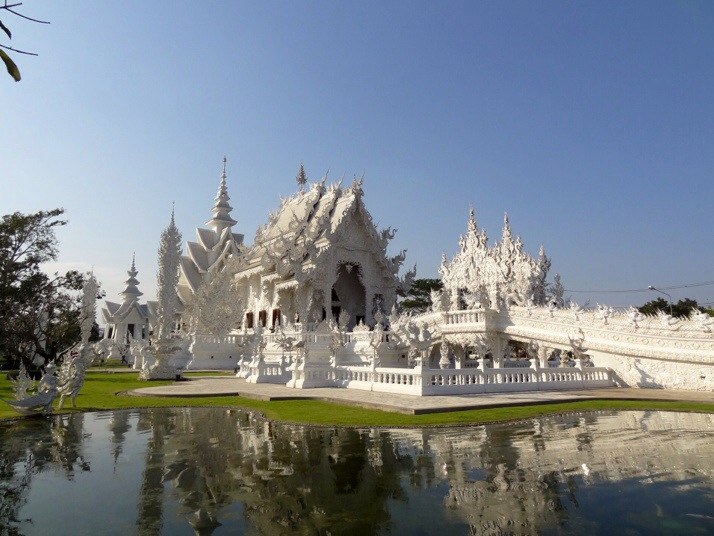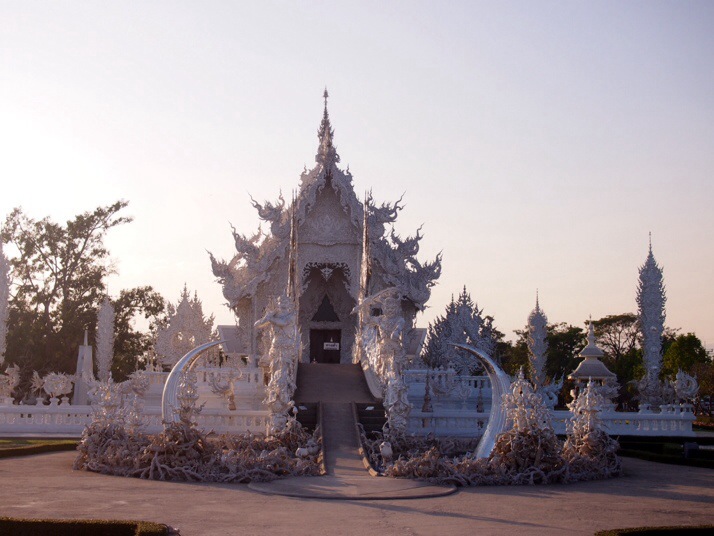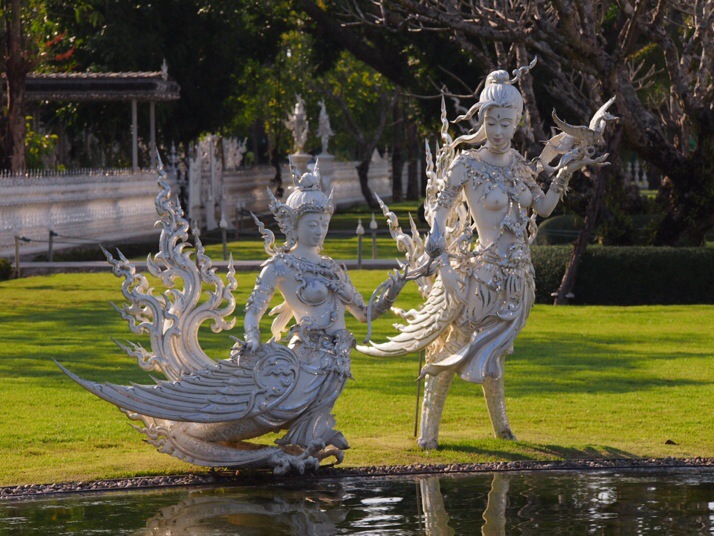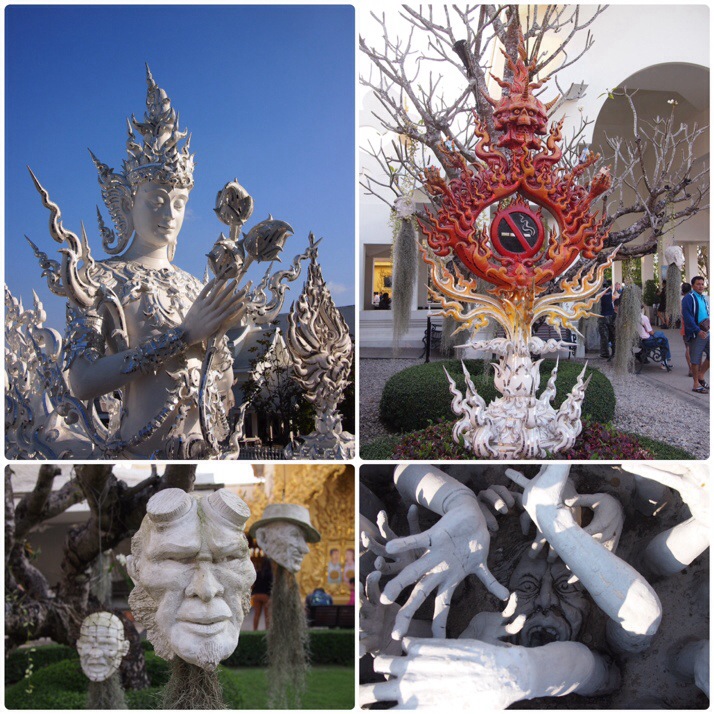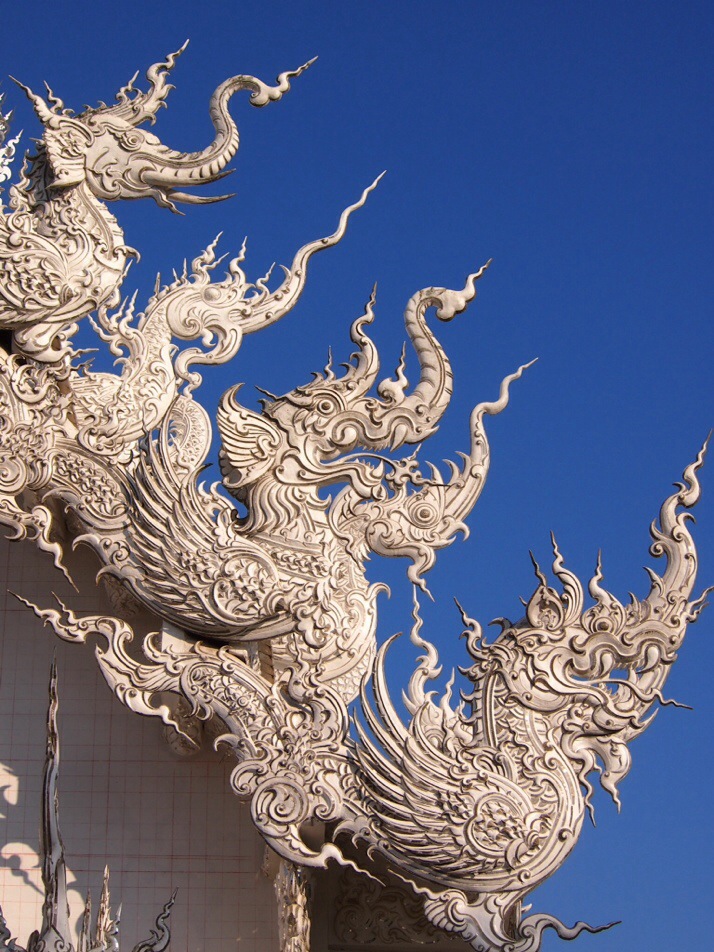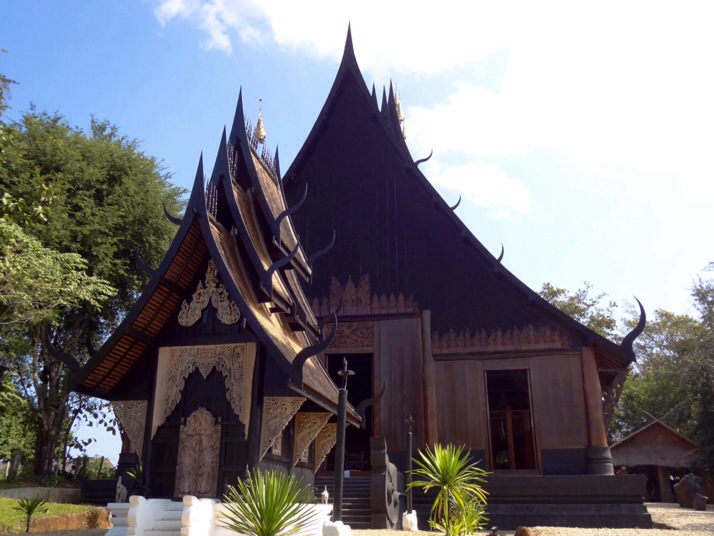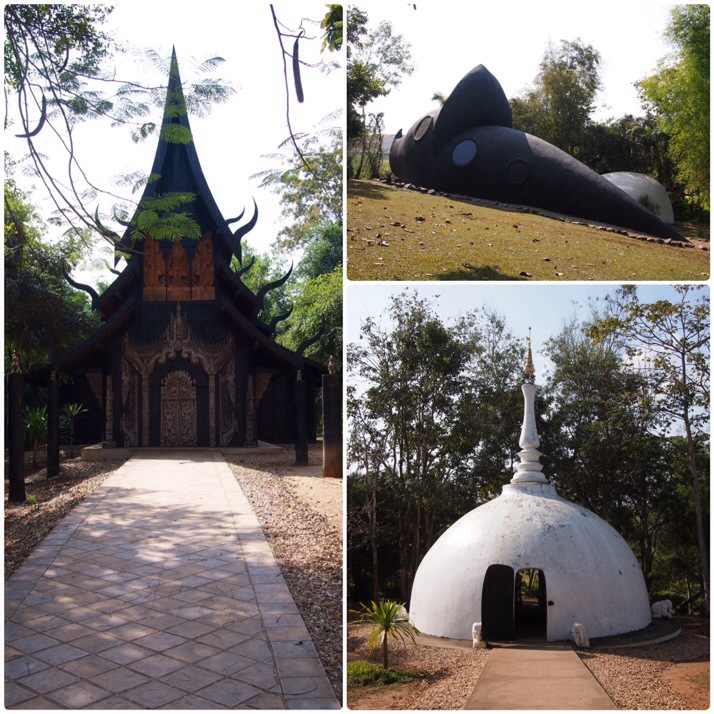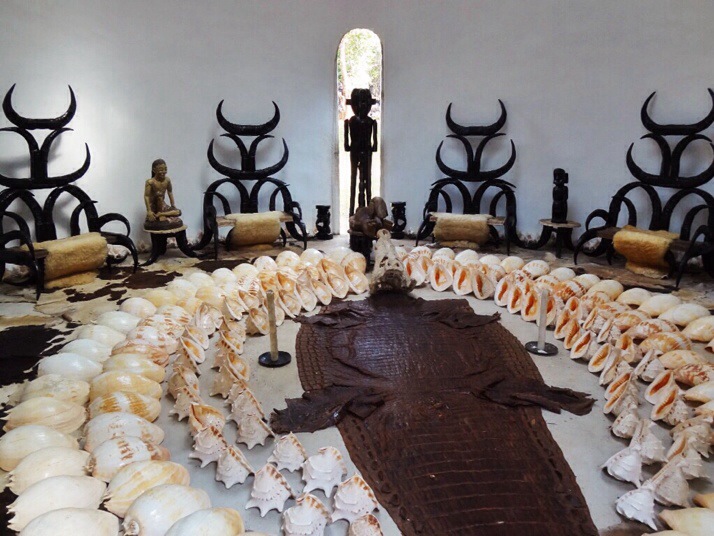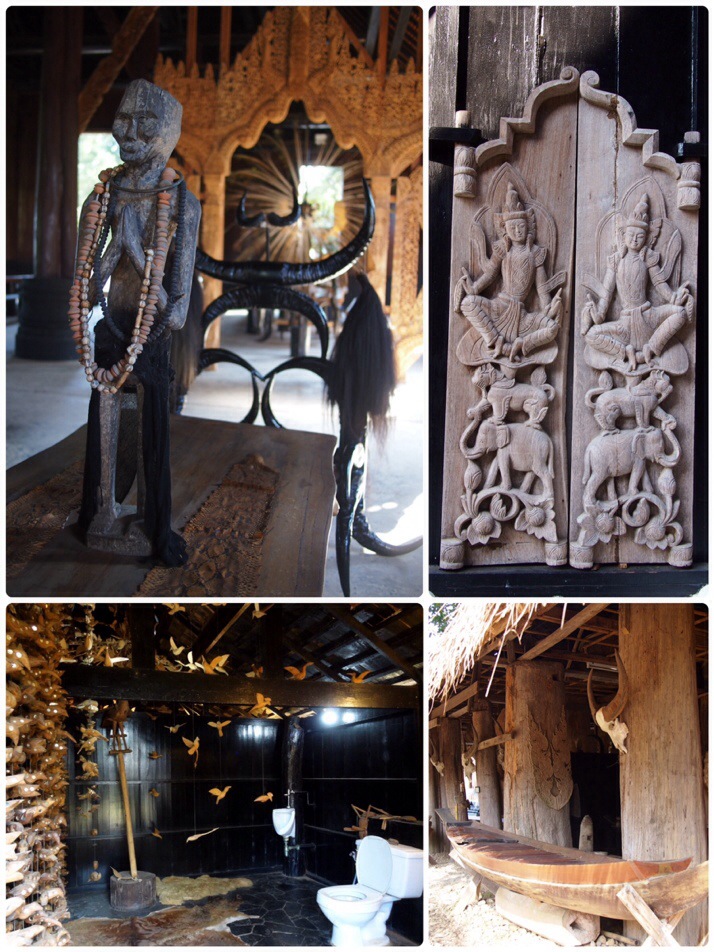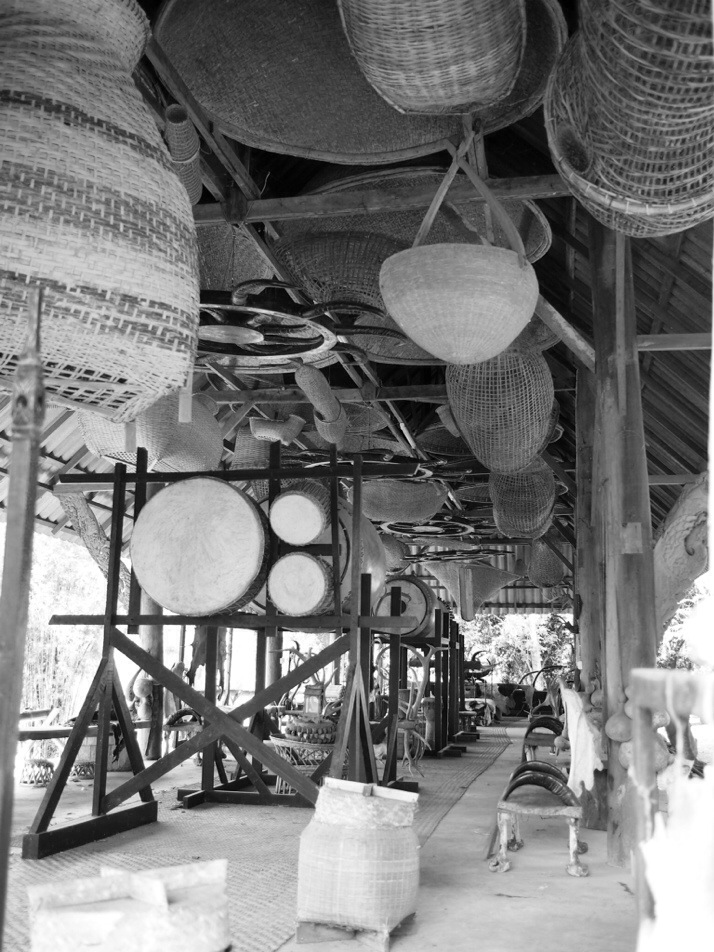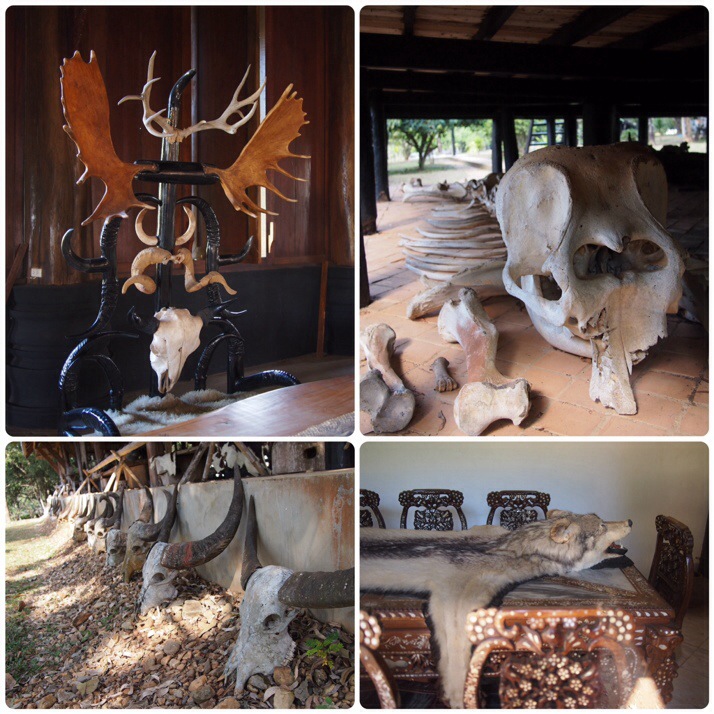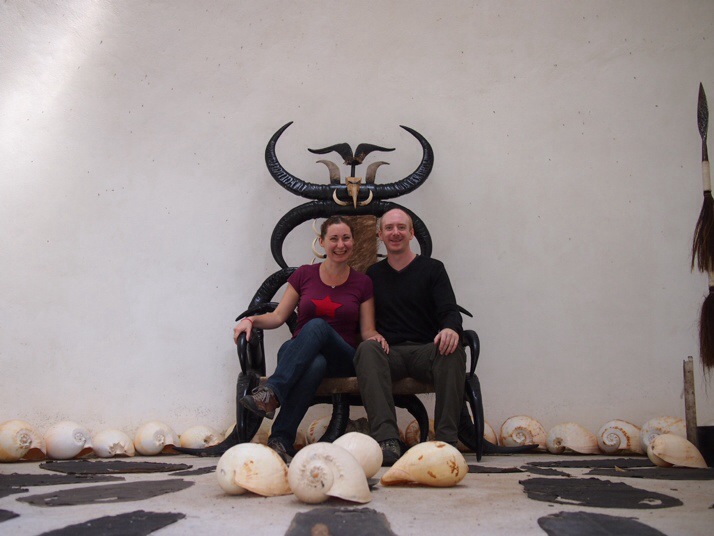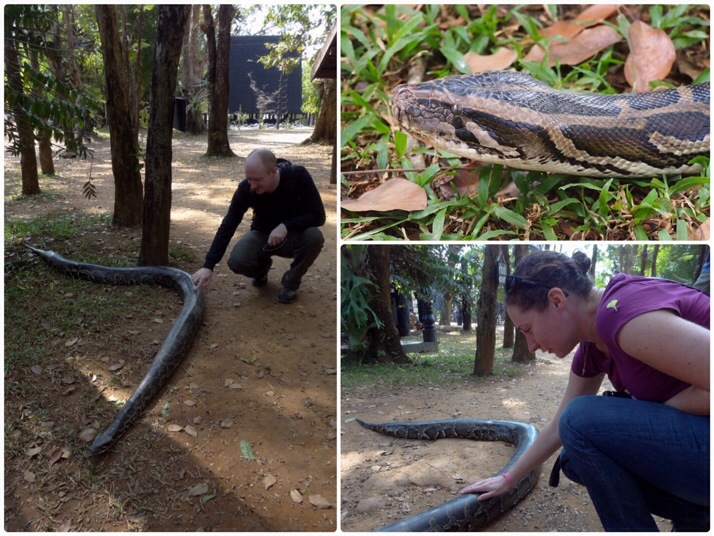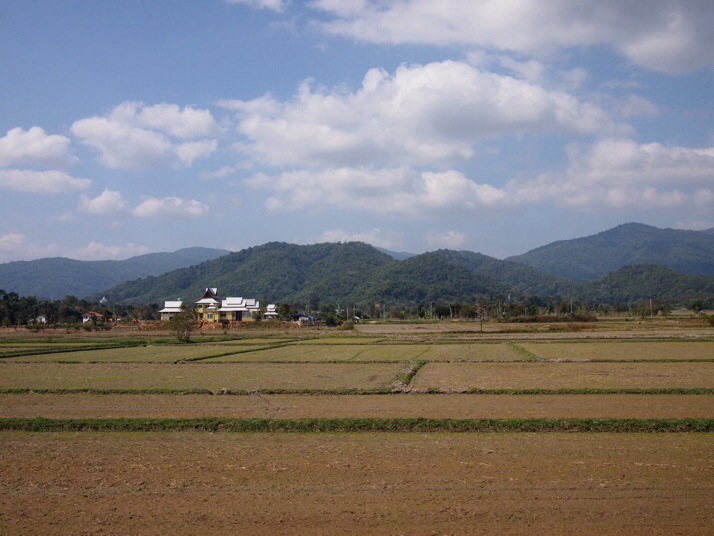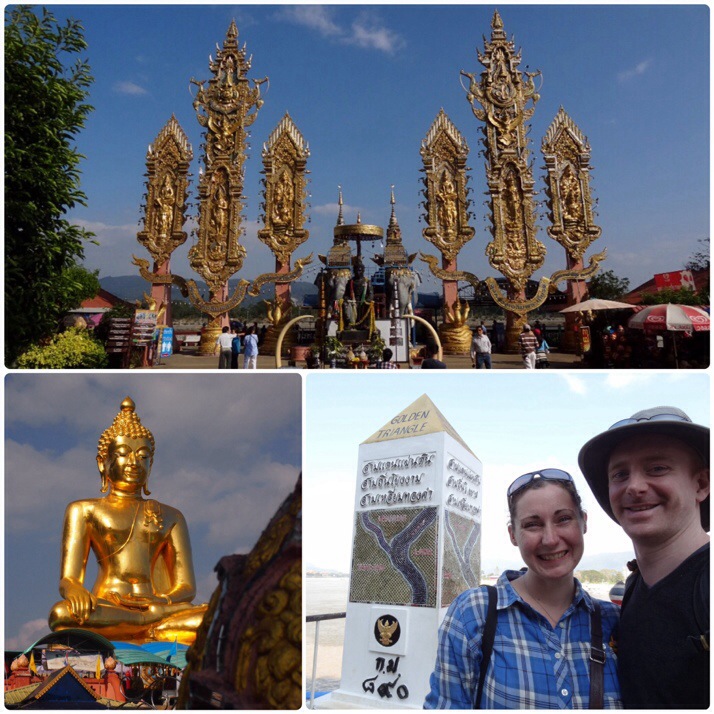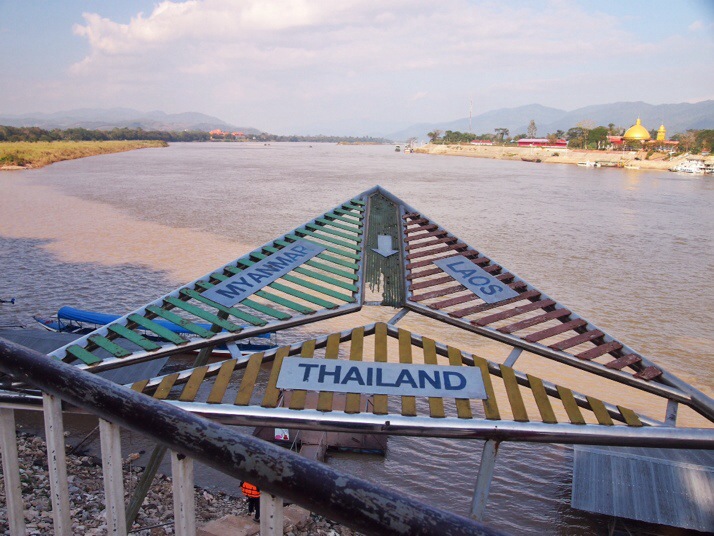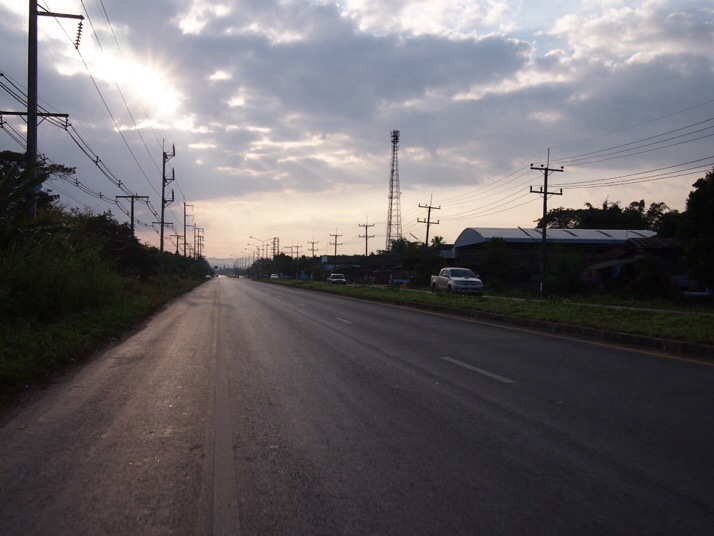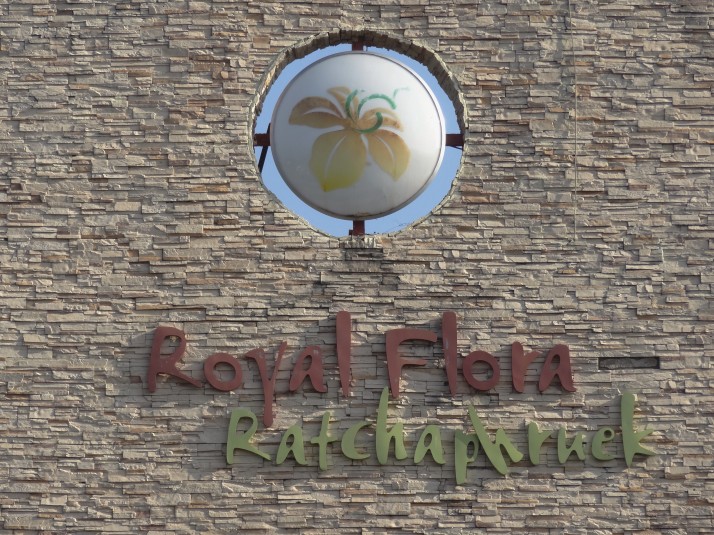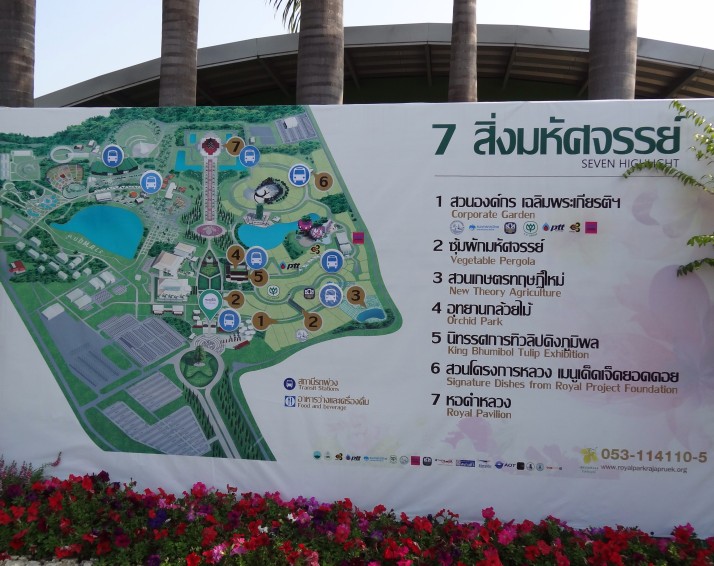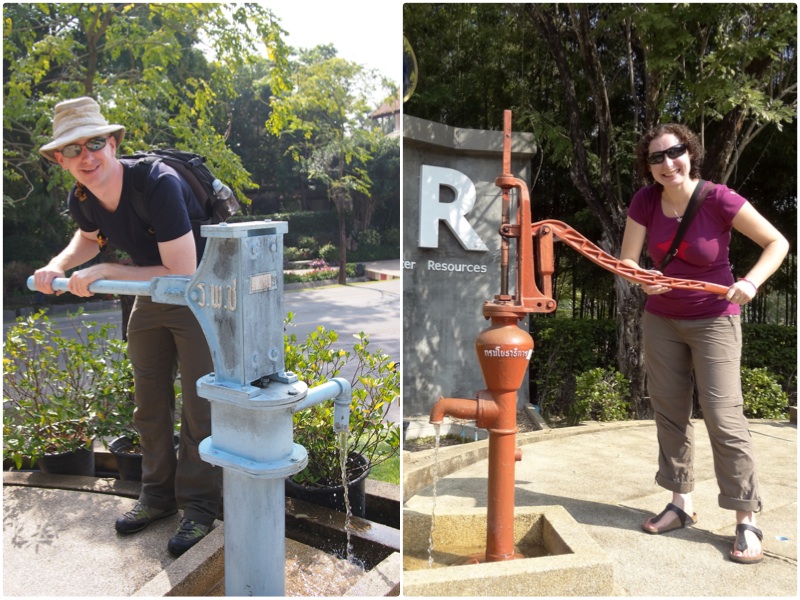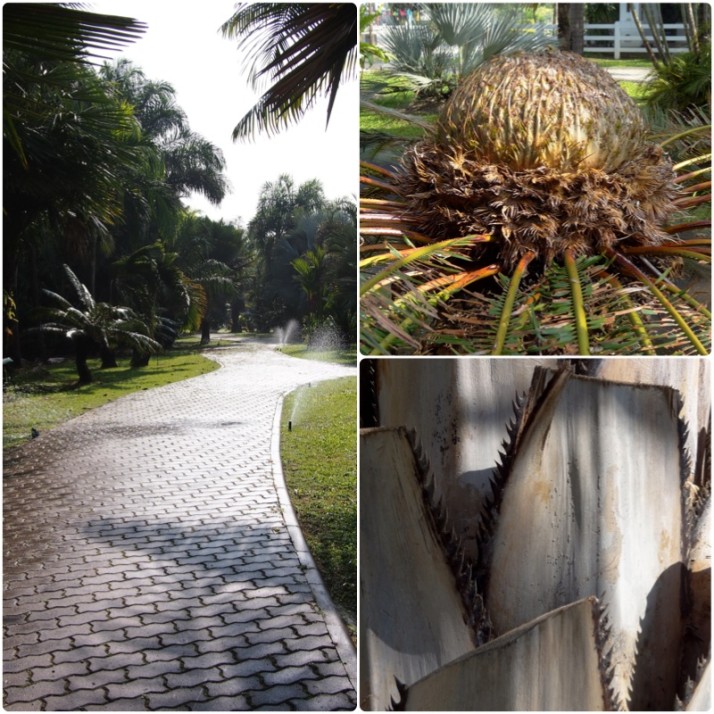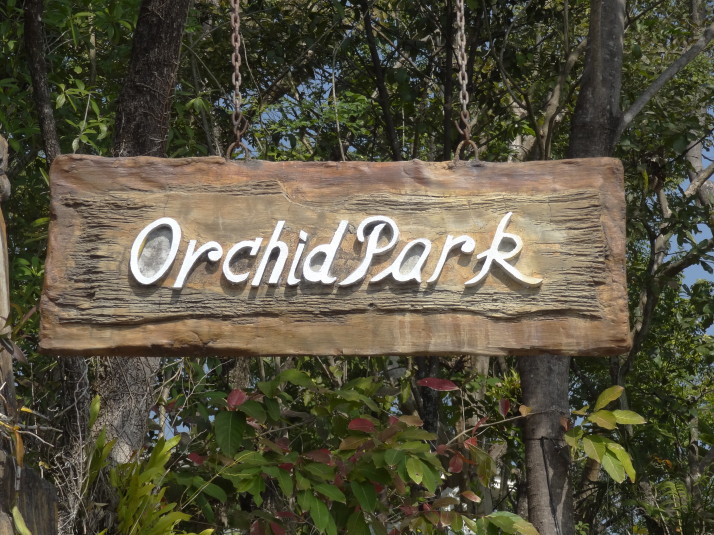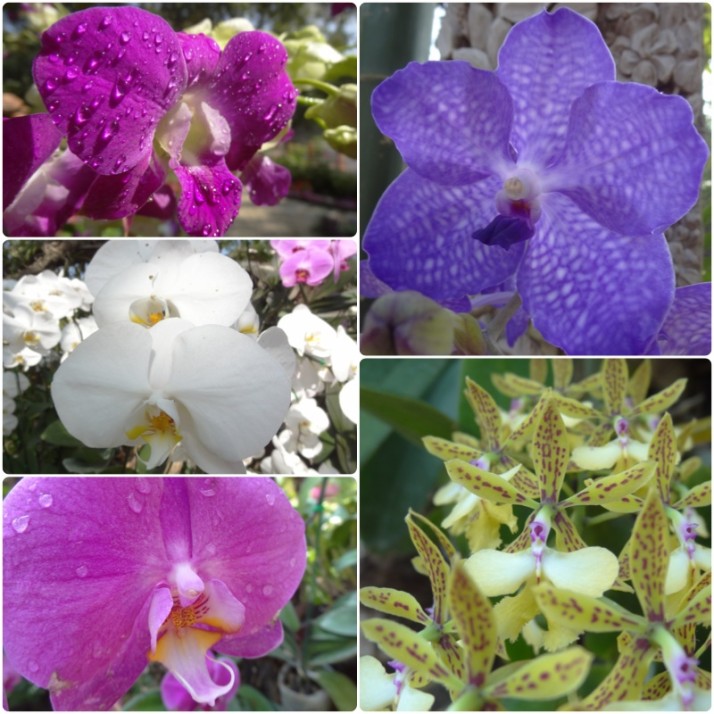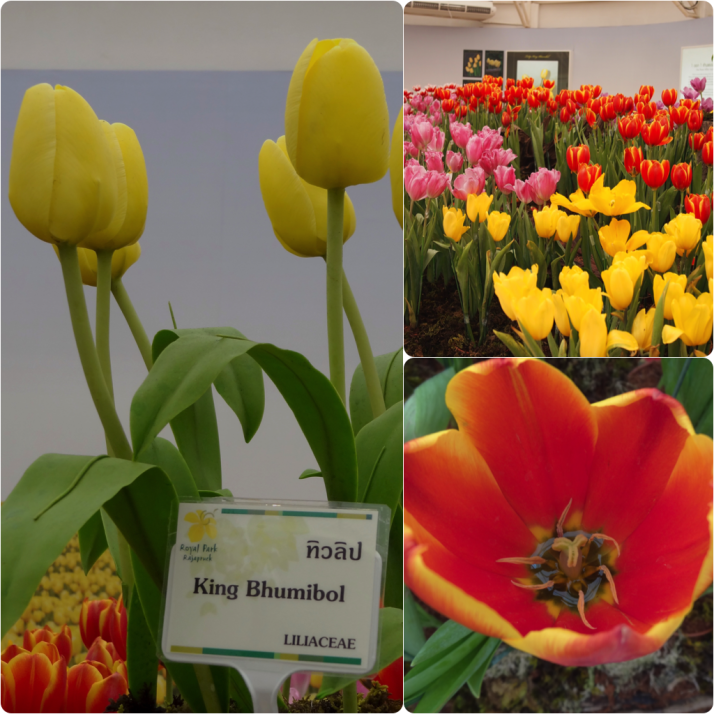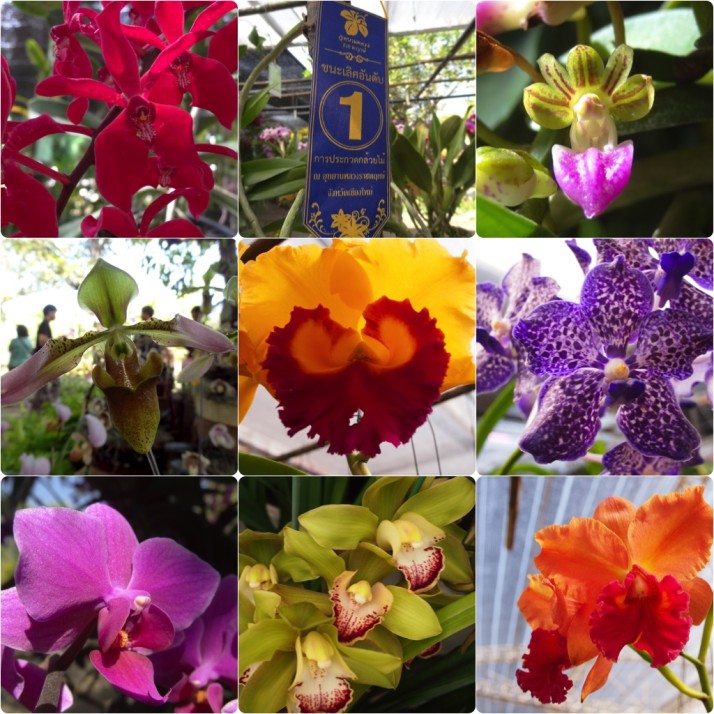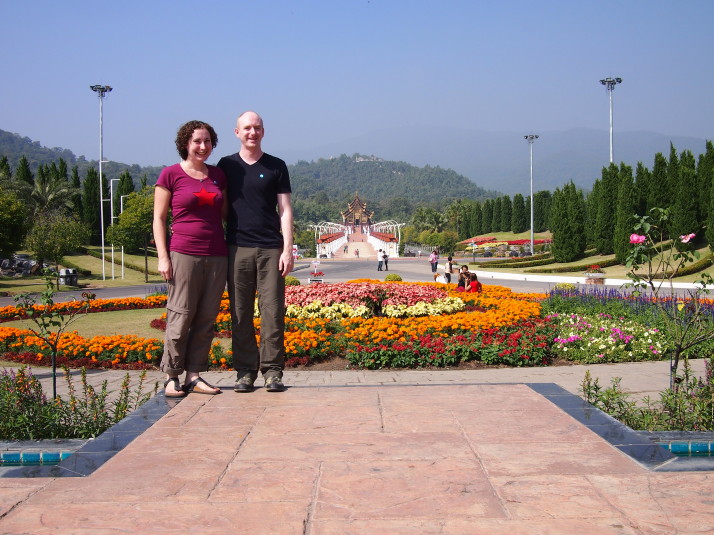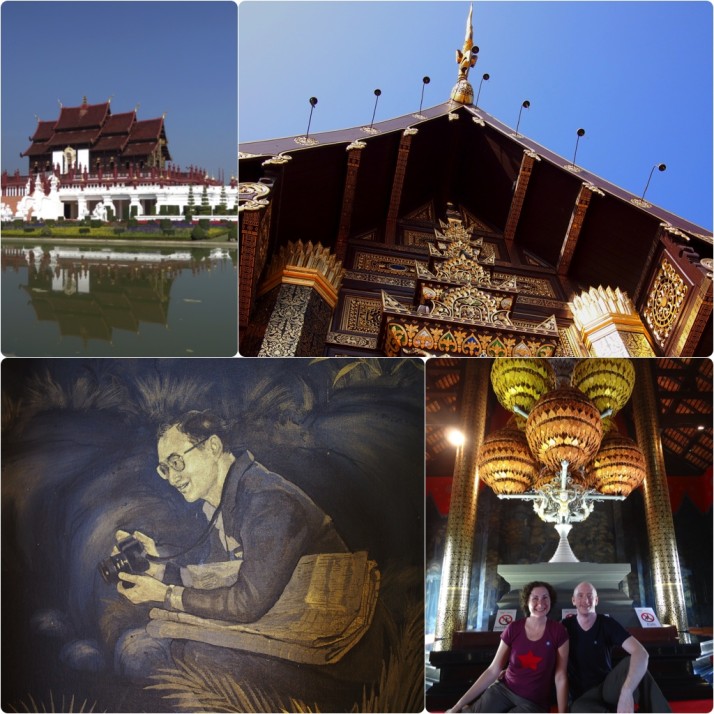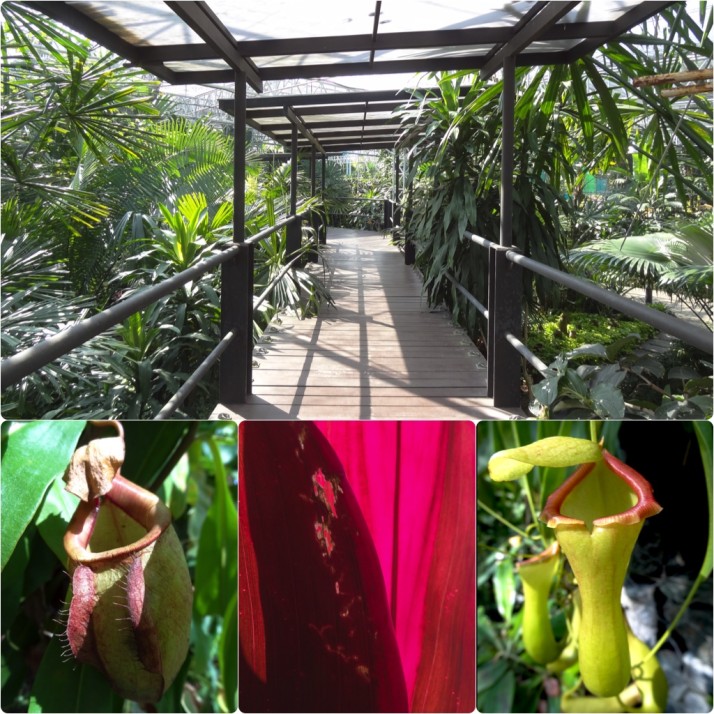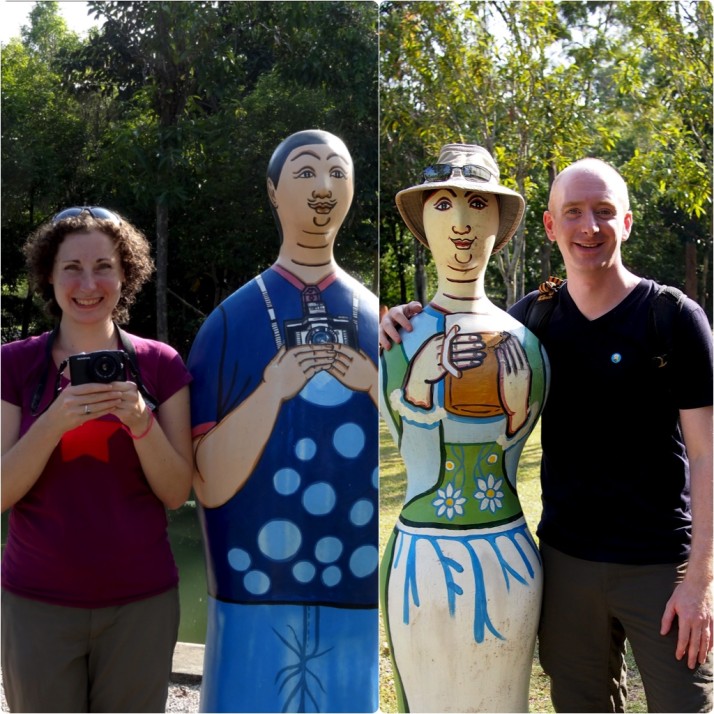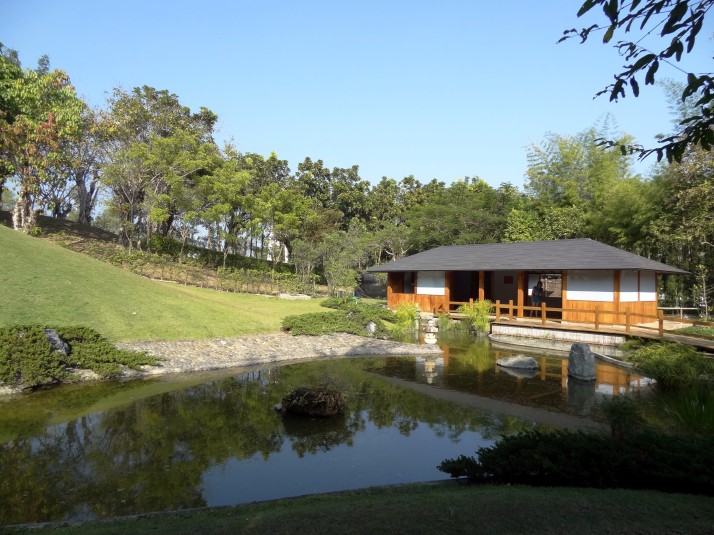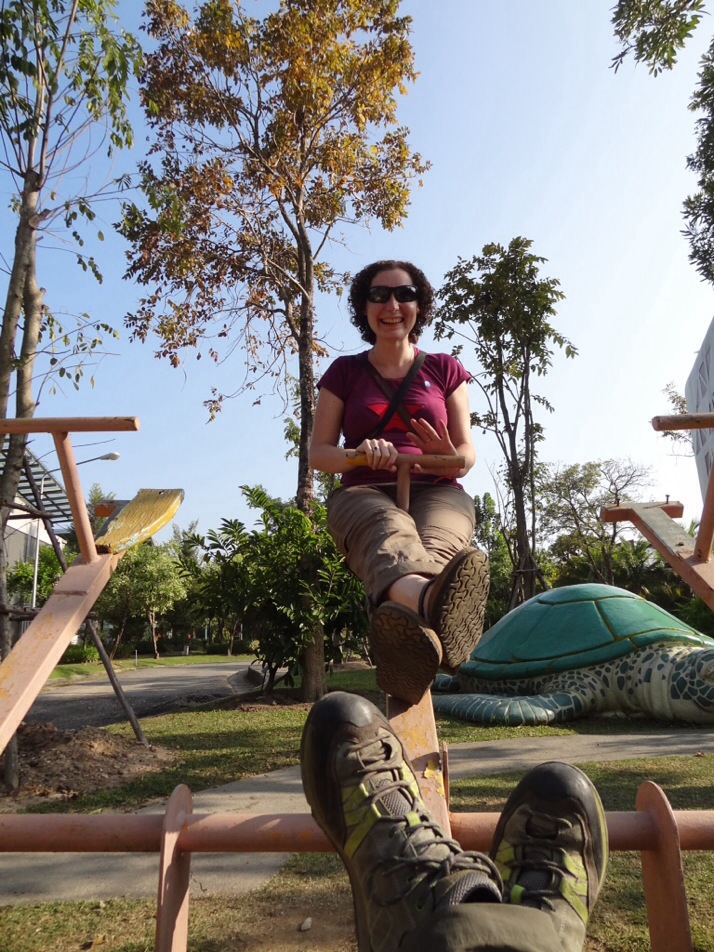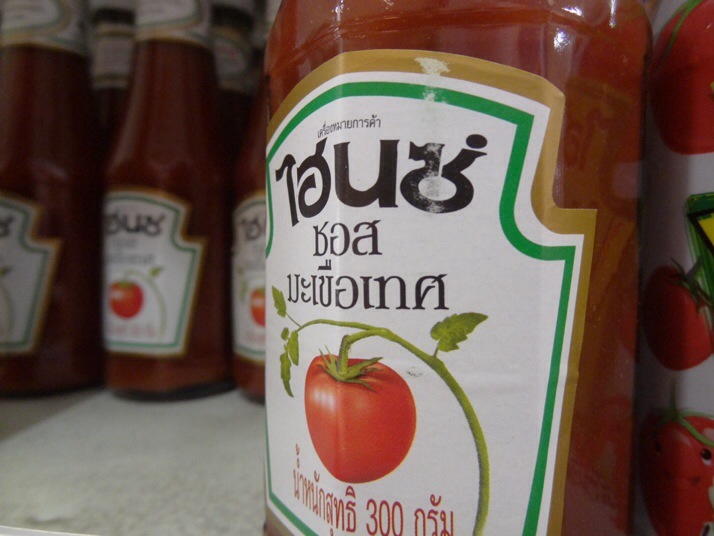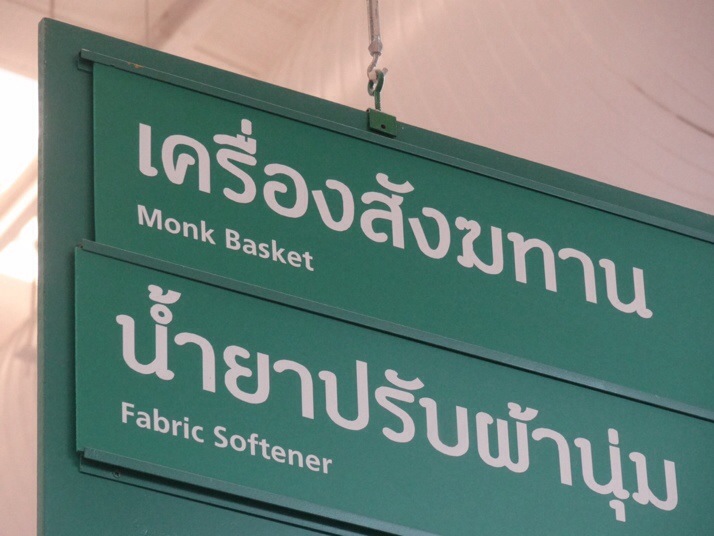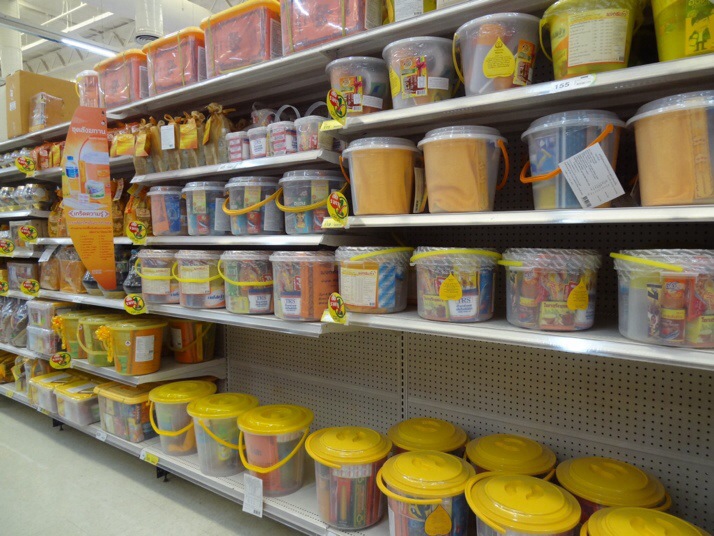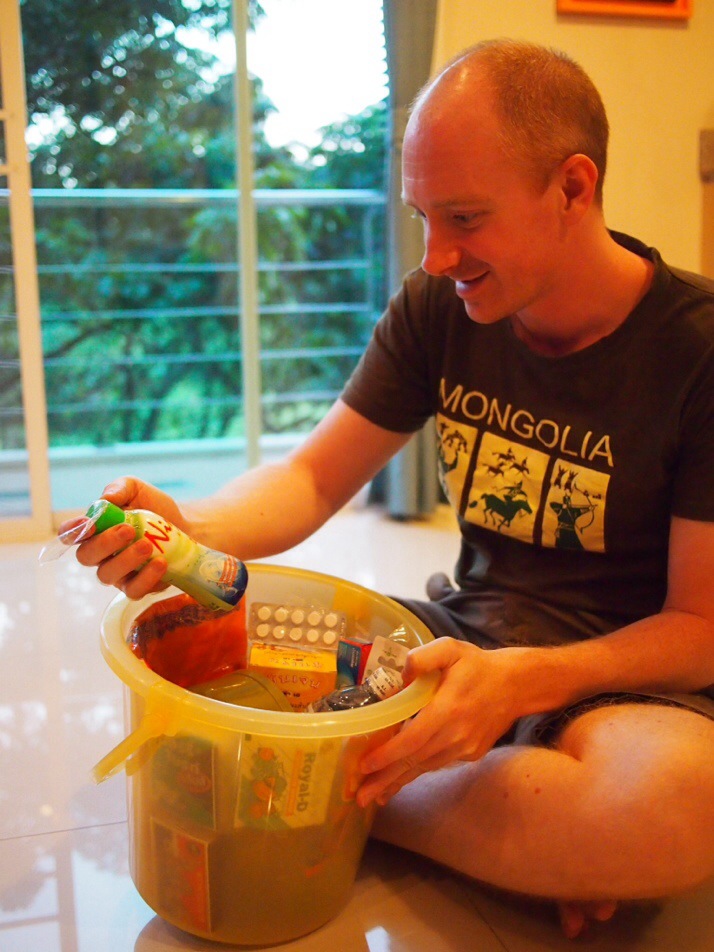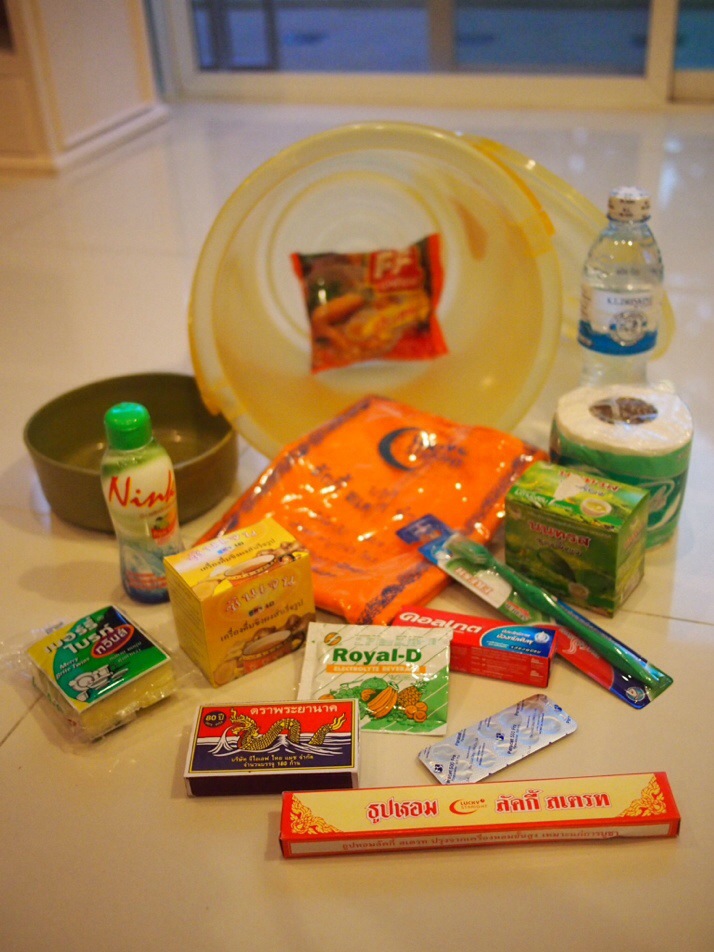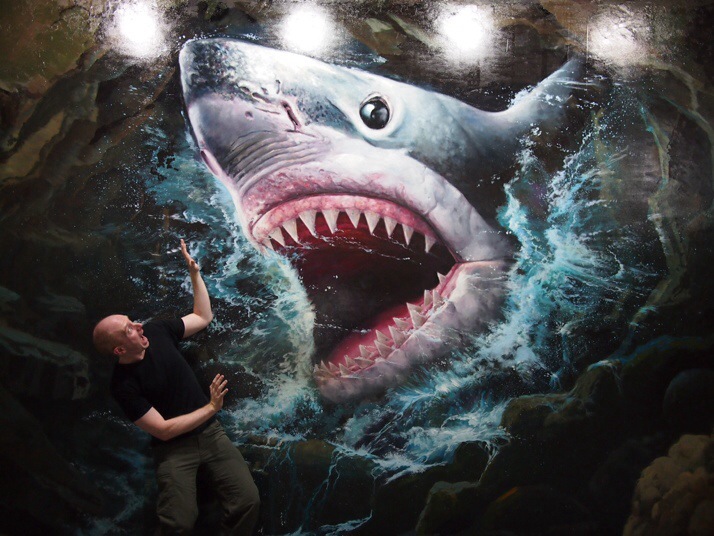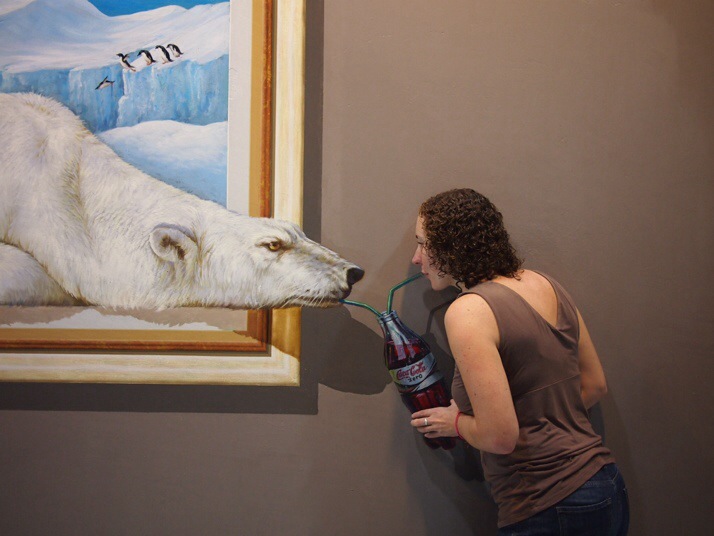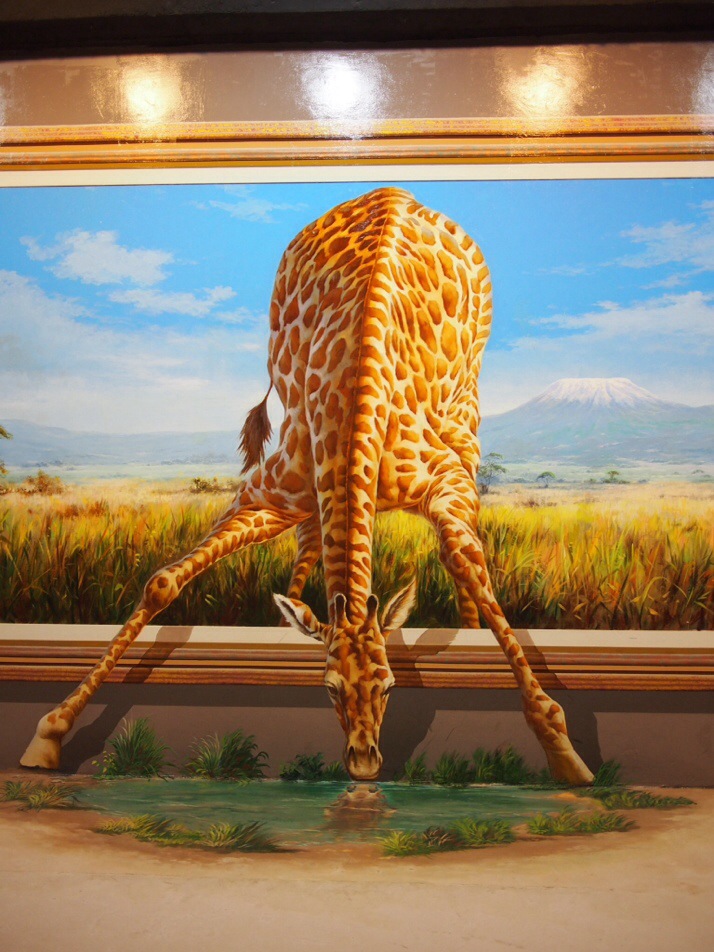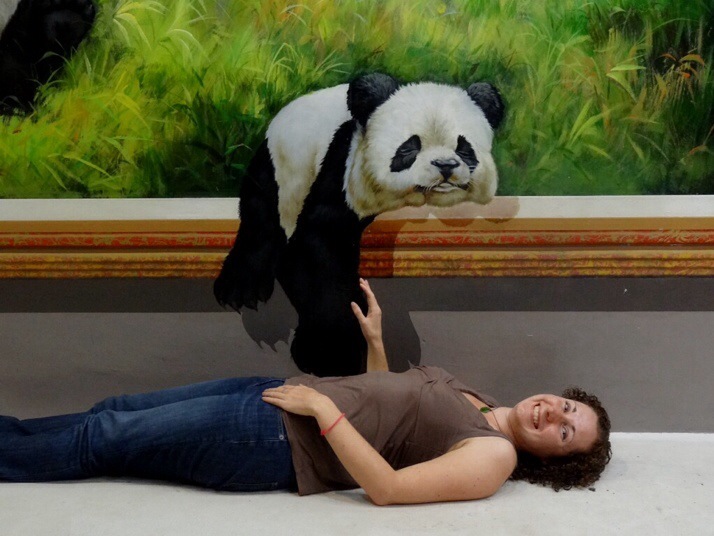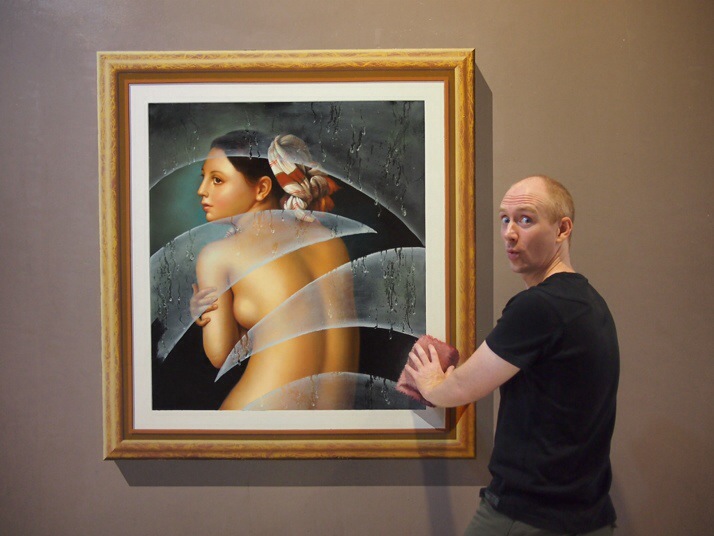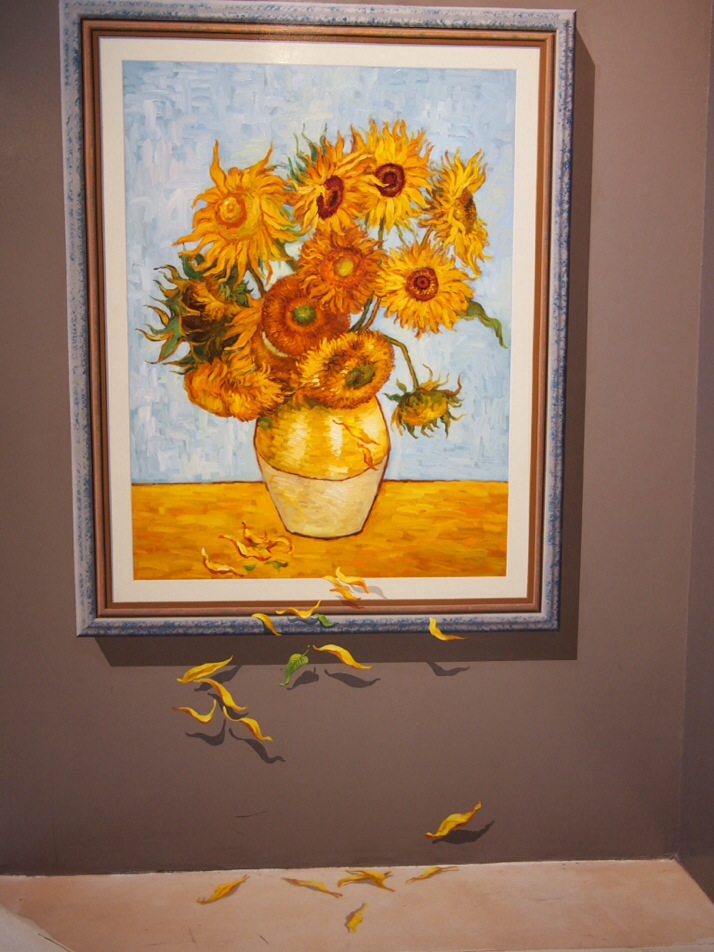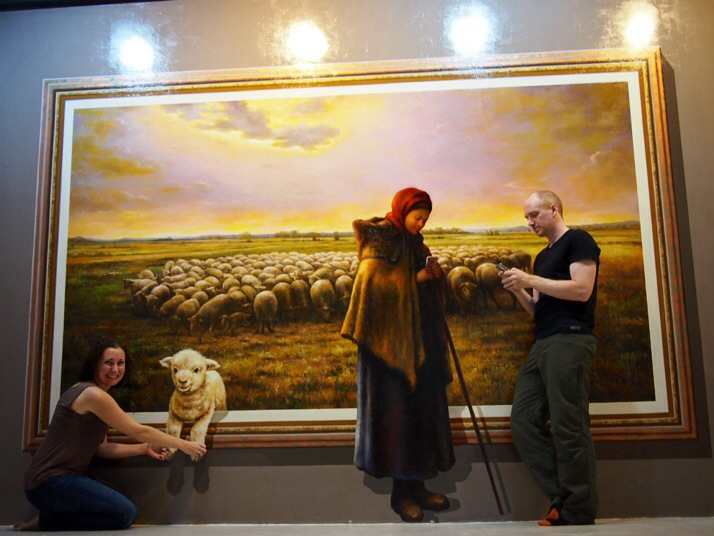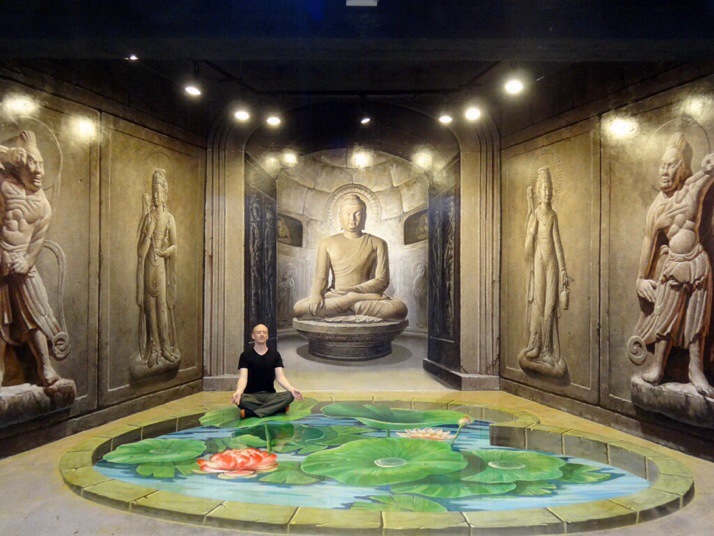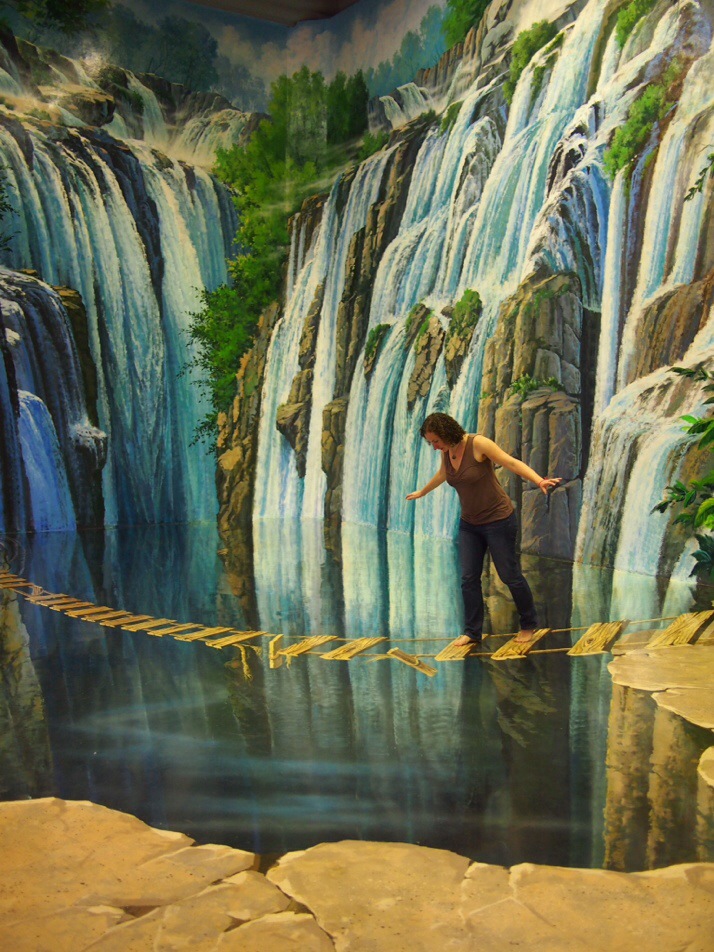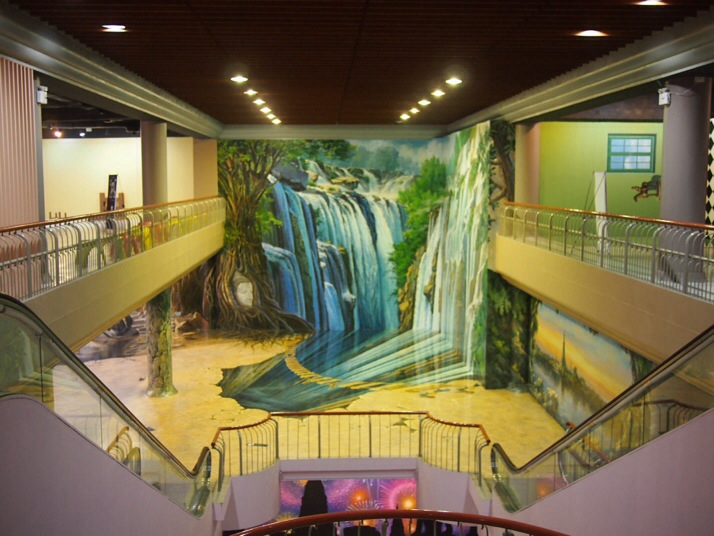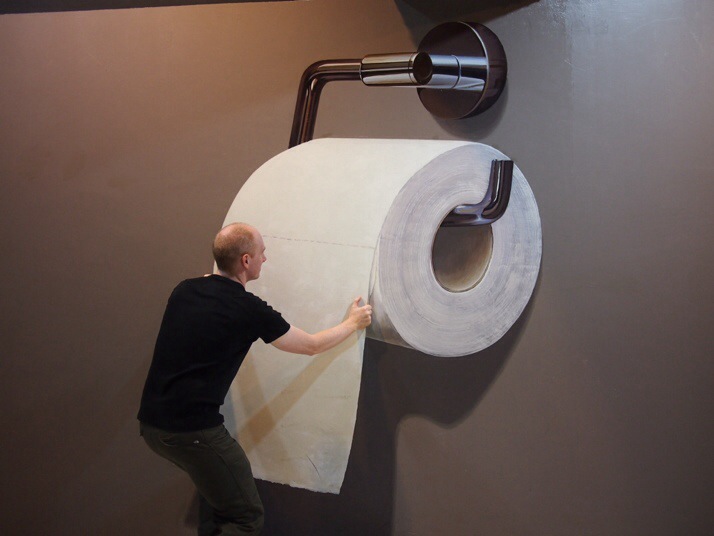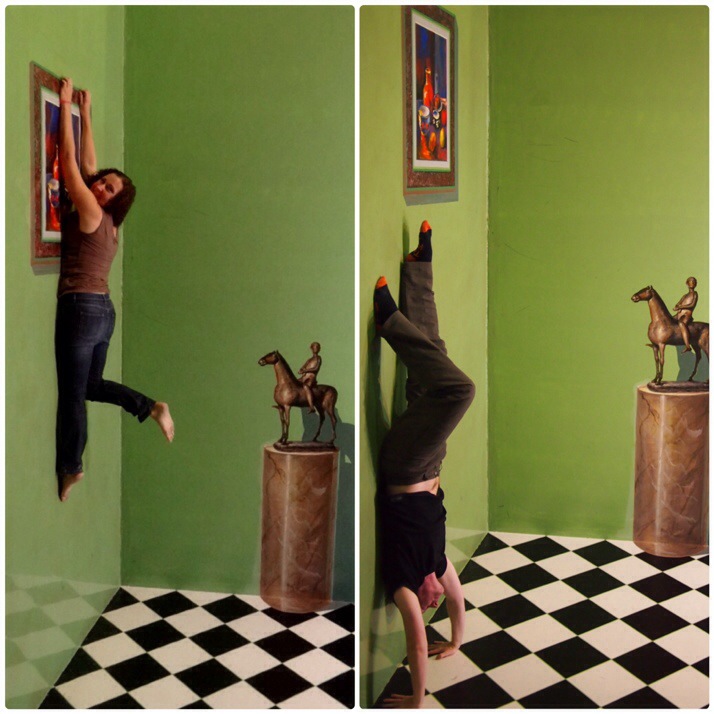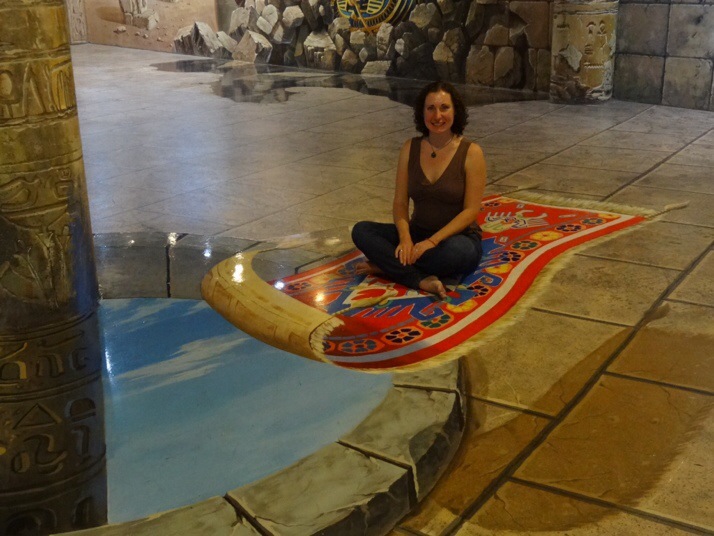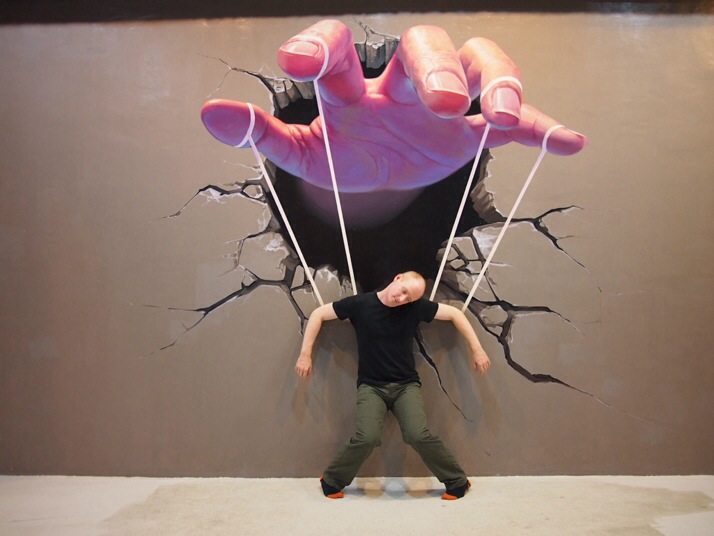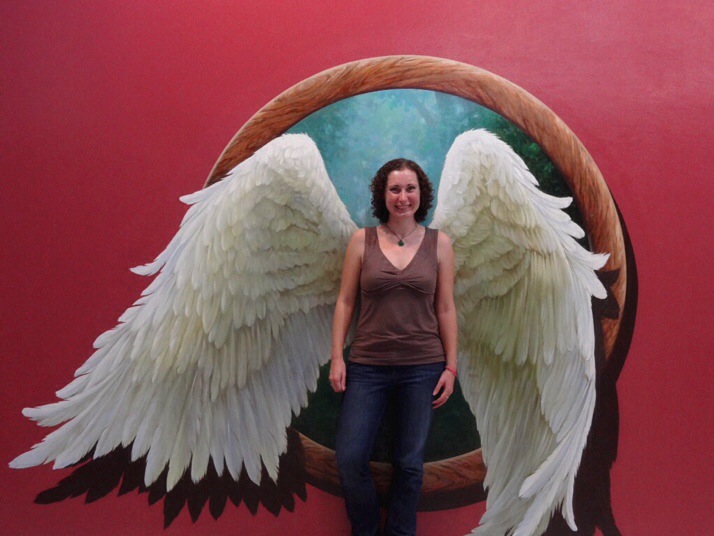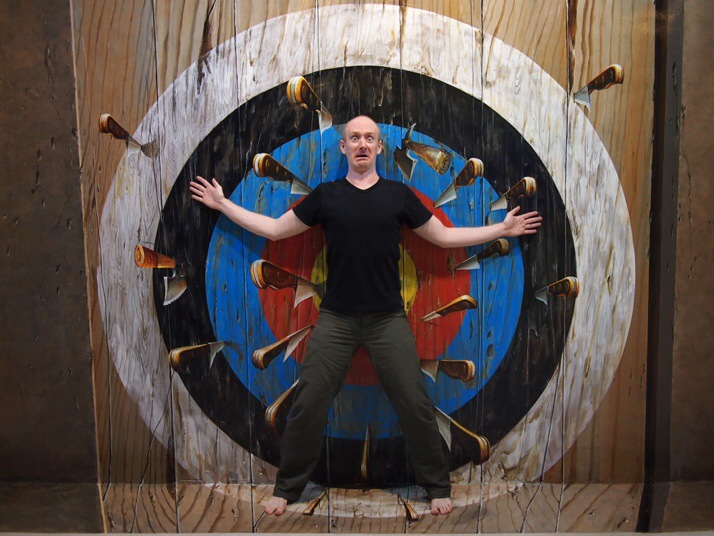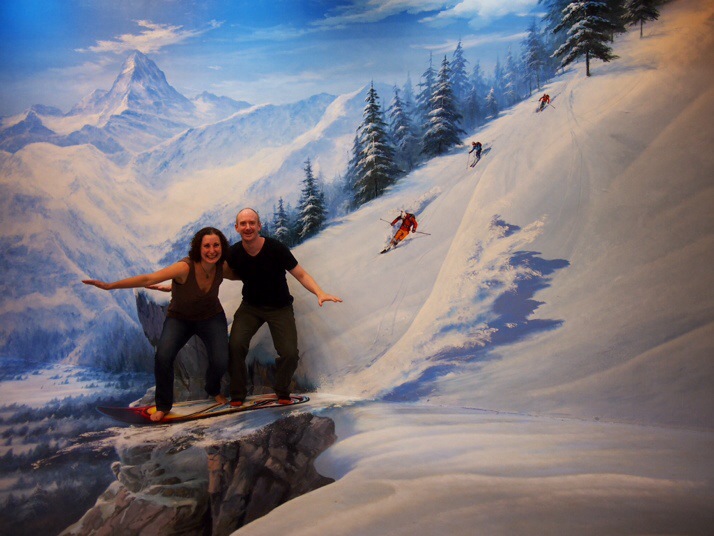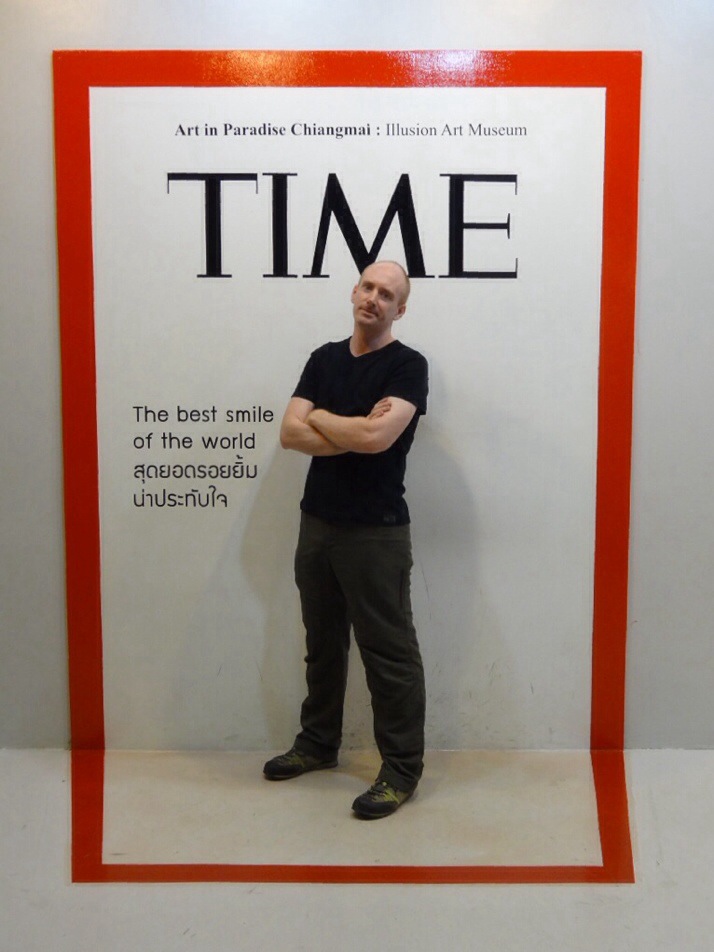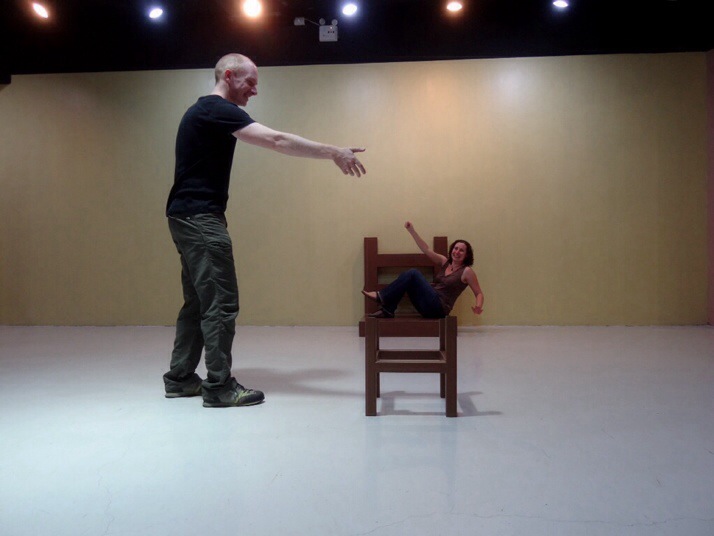We really enjoyed doing a Street Food tour in Vietnam, so when we found out how many cookery schools there are in Chiang Mai it seemed natural to take a class to find out how to make some authentic Thai food. After a bit of research we picked the ‘A Lot of Thai’ cookery school and booked in for their Friday course.
‘A Lot of Thai’ is run by husband and wife team Yui and Kwan. Yui doesn’t have formal culinary training but she is passionate about Thai food (actually I suspect she’s pretty enthusiastic about all kinds of food!) and has been teaching people to cook for over ten years. There are photos of her more famous students around the classroom, including Gordon Ramsey. Her husband Kwan is a graphic designer and also handles the bookings and transport. The classroom is at the side of their house under a lean-to roof.
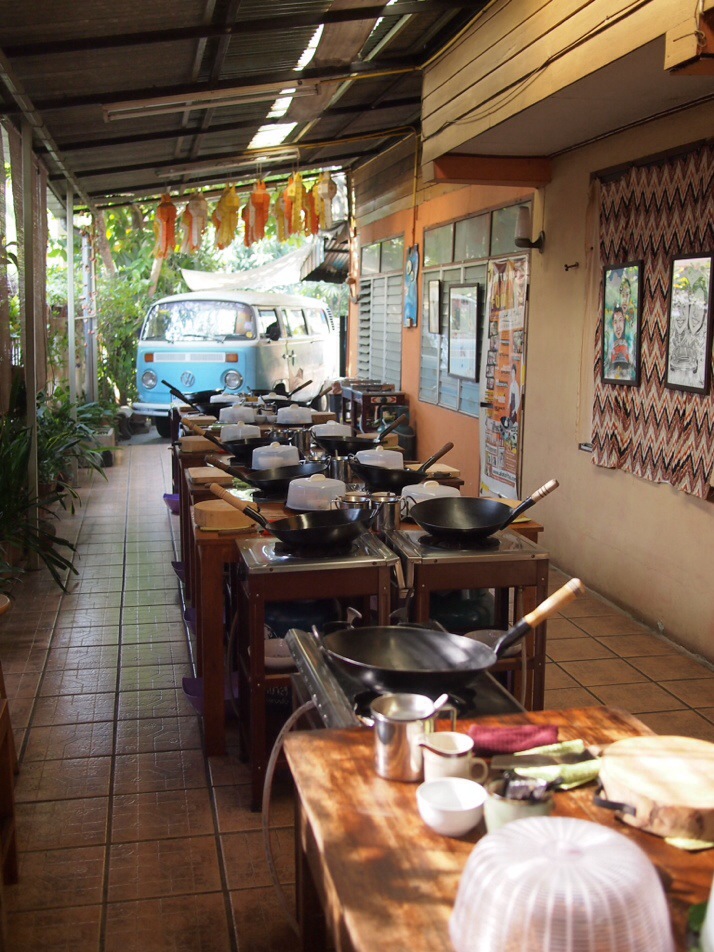 Classroom before we started cooking. We were collected and brought to the class in their classic VW camper van.
Classroom before we started cooking. We were collected and brought to the class in their classic VW camper van.
Stir-fried rice with Thai herbs
We made six dishes during the day, first up was what Yui considers to be her signature dish, fried rice with Thai herbs. Each lesson worked in a similar way, Yui would explain to the ten students a little about the dish and show us how to prepare the ingredients, we would return to our stations to do our preparation and then she would demonstrate the cooking before we went off to finish the dish. At the end we all sat together to eat our creation.
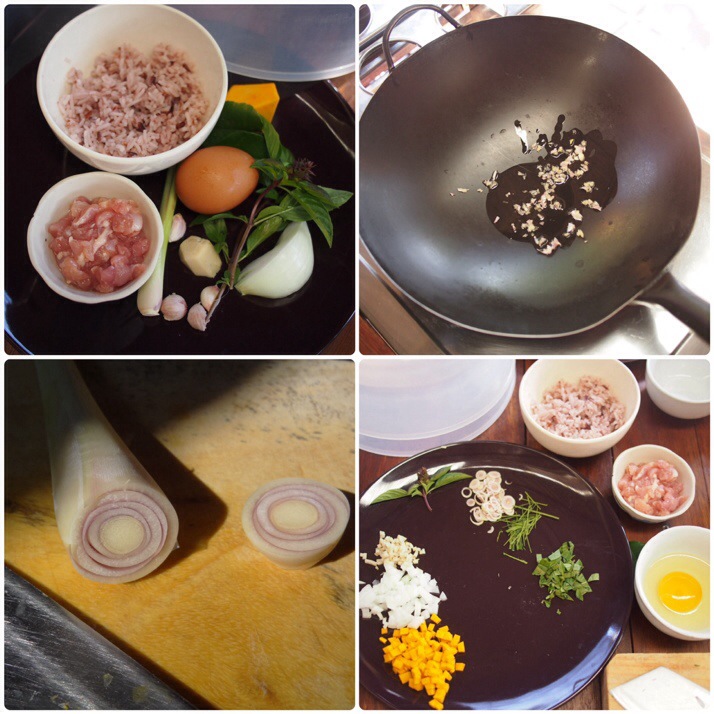 Fried rice preparation: our ingredients plate as we received it, chopped garlic and oil in the wok, finely slicing lemongrass, ingredients plate ready for cooking
Fried rice preparation: our ingredients plate as we received it, chopped garlic and oil in the wok, finely slicing lemongrass, ingredients plate ready for cooking
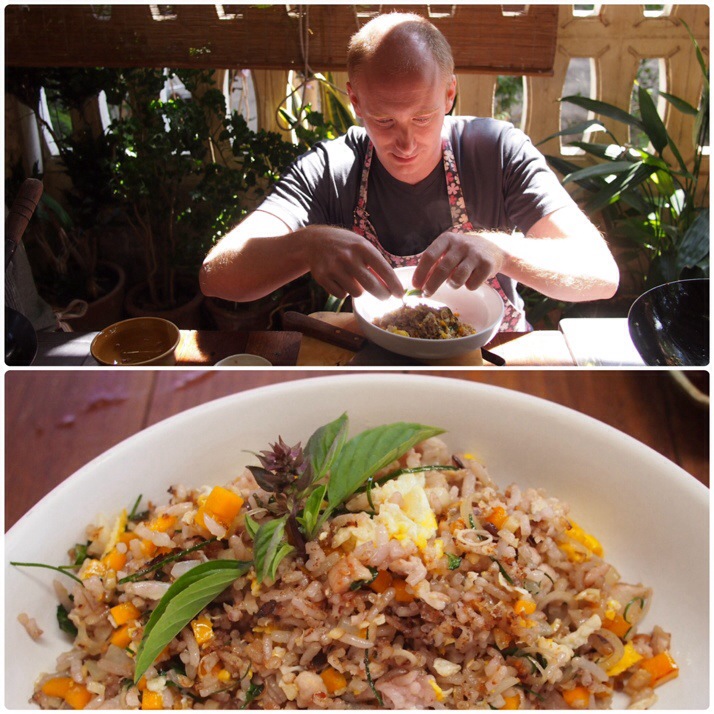 Andrew carefully aligns his basil leaf garnish, the finished product – yum!
Andrew carefully aligns his basil leaf garnish, the finished product – yum!
Papaya salad
Papaya salad is unlike anything I’ve come across in other cuisines. It’s fresh and crisp but with a fiery hot, salty and sour dressing. Traditionally made with unripe papaya, there’s also a version made with green mango, and Yui gave us substitutions that we could find at home – either green pears or Granny Smith apples!
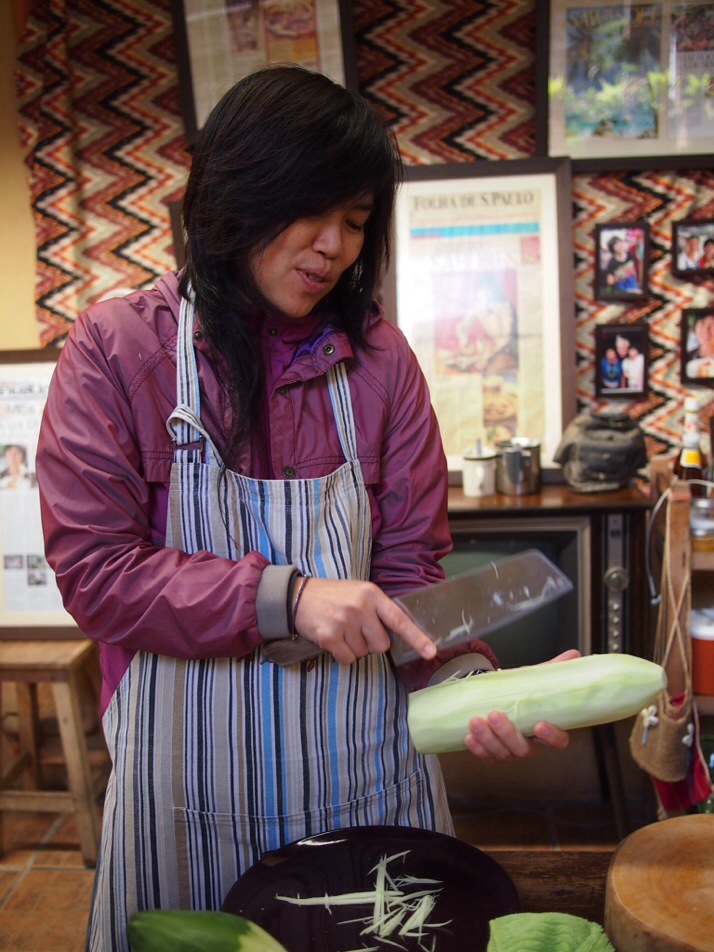 Yui showed us the traditional way of shredding the papaya which involved a lot of fast work with the cleaver. We prepared it the modern way with a kind of wavy vegetable peeler, I don’t suppose people going home with missing fingers would be very good for the school’s Tripadvisor ratings…
Yui showed us the traditional way of shredding the papaya which involved a lot of fast work with the cleaver. We prepared it the modern way with a kind of wavy vegetable peeler, I don’t suppose people going home with missing fingers would be very good for the school’s Tripadvisor ratings…
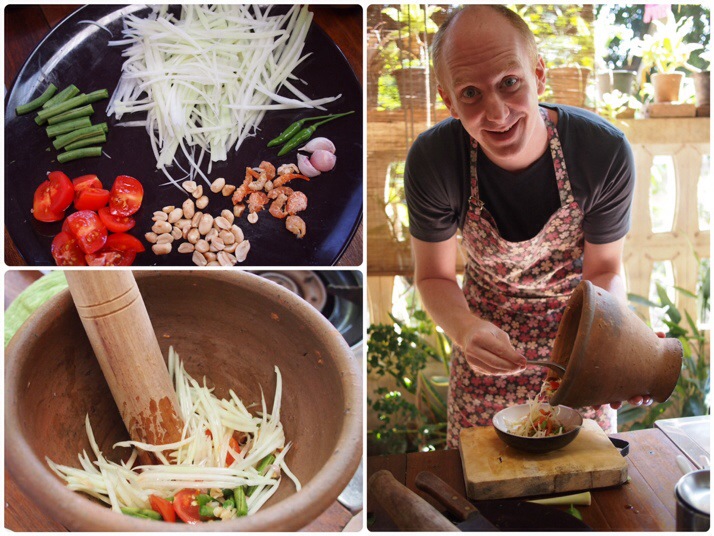 The method is incredibly simple, the ingredients are pounded together in about three stages in a big pestle and mortar before being served
The method is incredibly simple, the ingredients are pounded together in about three stages in a big pestle and mortar before being served
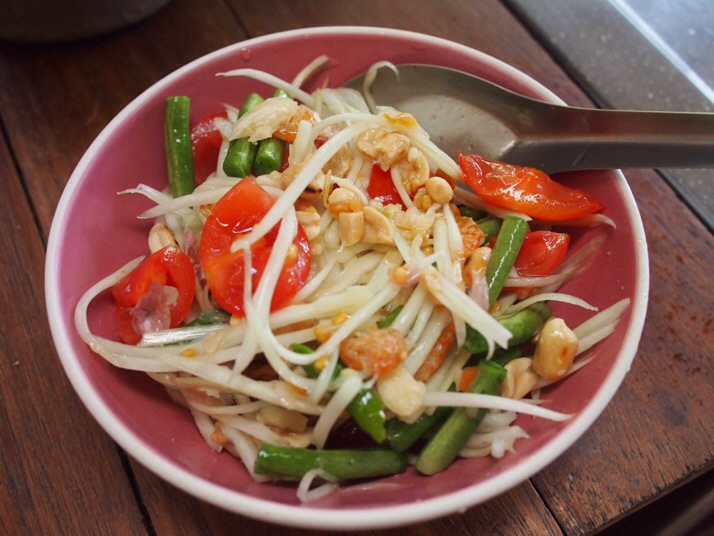 Delicious but I might have to reduce the amount of chilli I use next time (or work on upping my tolerance!)
Delicious but I might have to reduce the amount of chilli I use next time (or work on upping my tolerance!)
Panaeng Curry
Thai curries are famous all over the world. I was a little disappointed that we weren’t taught how to make the curry paste although there are recipes for the various kinds in our souvenir cookbook.
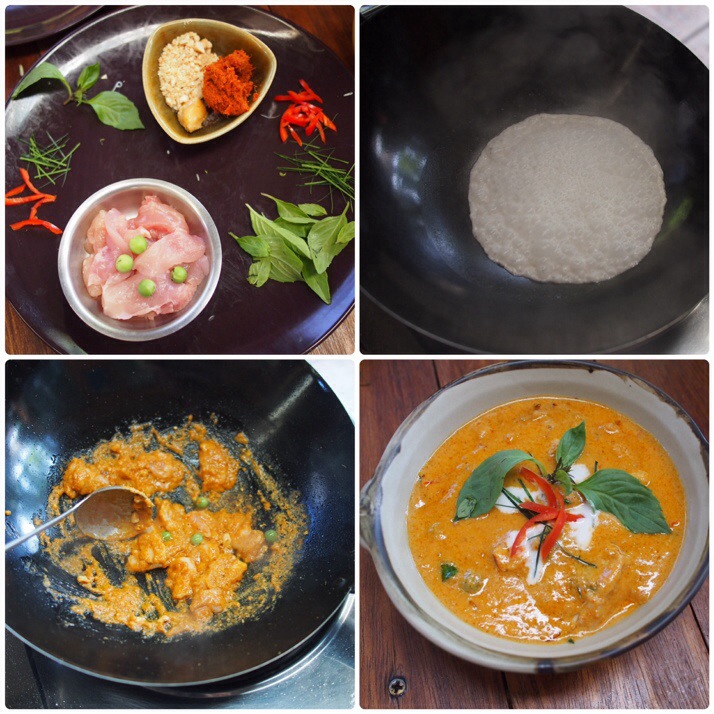 Panaeng curry: prepared ingredients, reducing the coconut cream in the wok, stir-frying the chicken, finished curry
Panaeng curry: prepared ingredients, reducing the coconut cream in the wok, stir-frying the chicken, finished curry
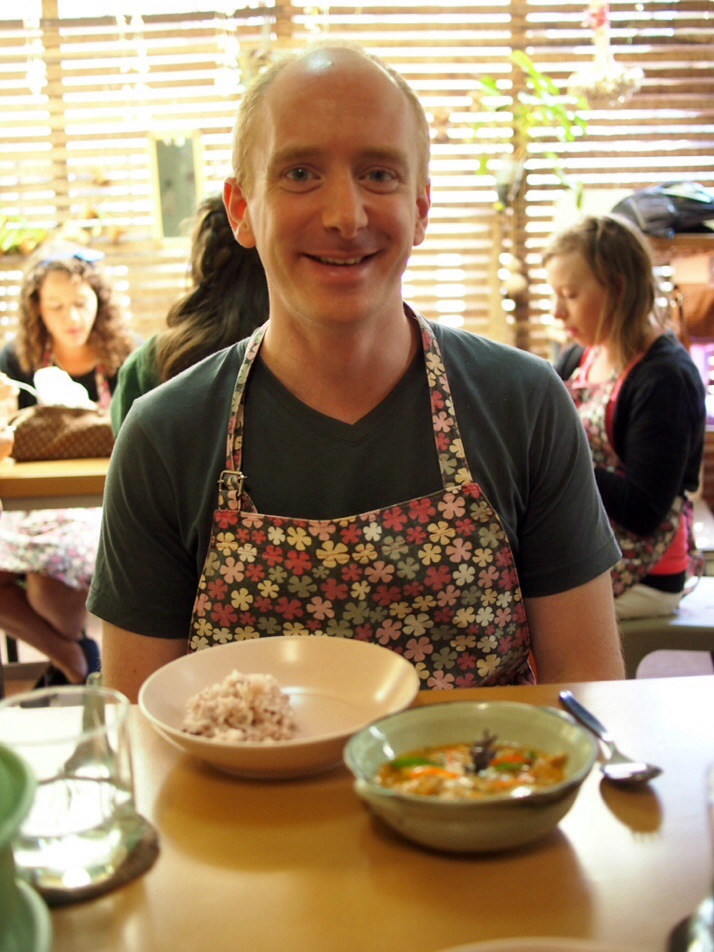 Andrew ready to tuck into his curry and rice
Andrew ready to tuck into his curry and rice
Visit to the market
By this stage we were getting quite full and were relieved to hear Yui announce that we were taking a break to visit the local market, Nong Hoy. We always love looking around local markets wherever we’re staying and to do so with a local guide is even better.
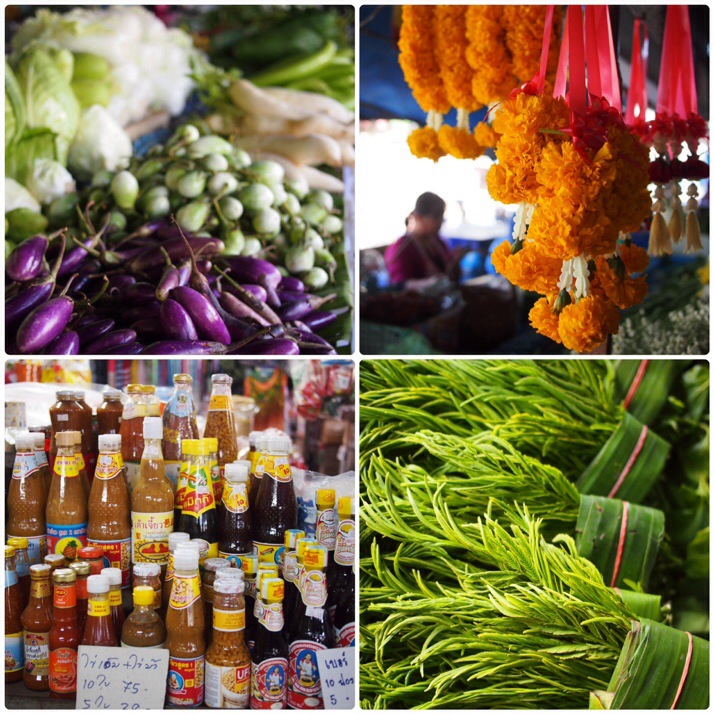 Produce in the market (clockwise from top left): fresh vegetables, marigold garlands, an unusual looking Thai herb, bottles of sauces
Produce in the market (clockwise from top left): fresh vegetables, marigold garlands, an unusual looking Thai herb, bottles of sauces
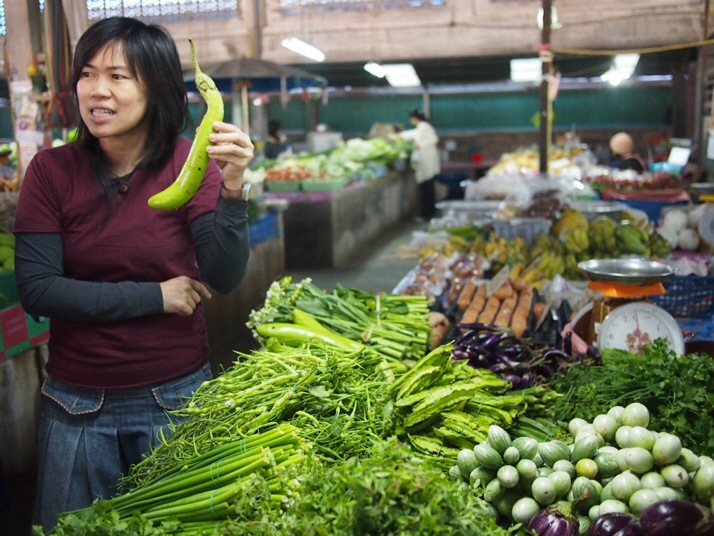 Yui explaining the many different varieties of aubergine used in Thai cooking
Yui explaining the many different varieties of aubergine used in Thai cooking
Stir-fried vegetables with glass noodles
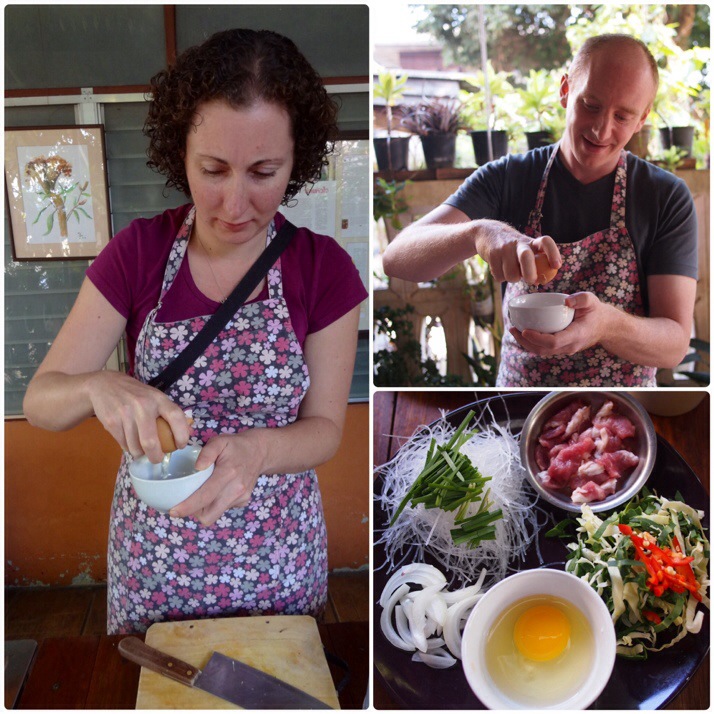 We were encouraged to try Yui’s method of breaking an egg with one hand, we both managed it but I think it’ll take a bit more practice to feel natural!
We were encouraged to try Yui’s method of breaking an egg with one hand, we both managed it but I think it’ll take a bit more practice to feel natural!
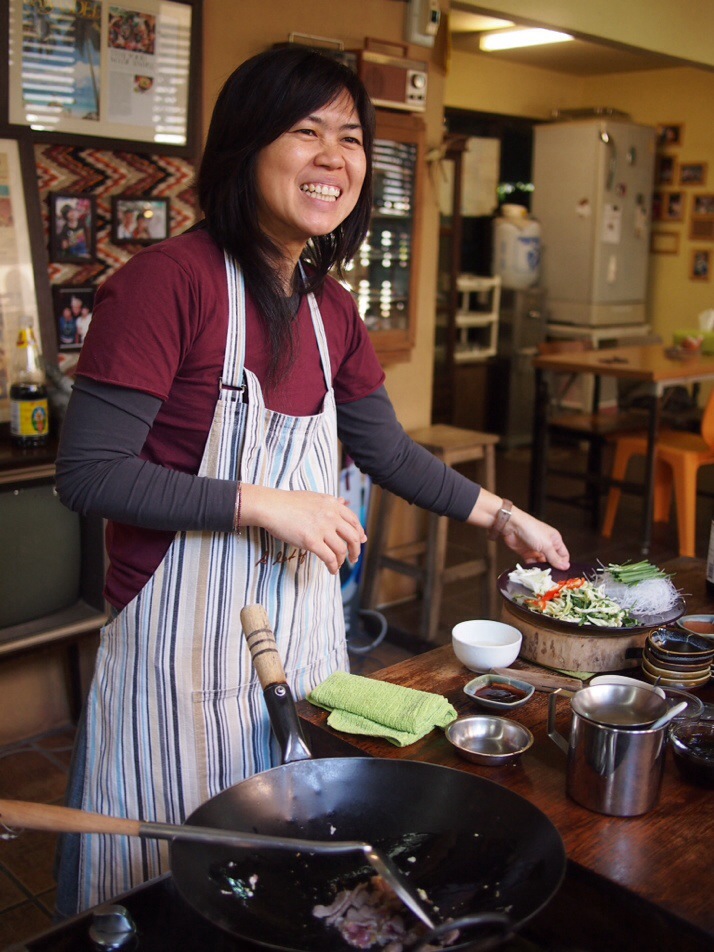 Yui demonstrating the stir-frying
Yui demonstrating the stir-frying
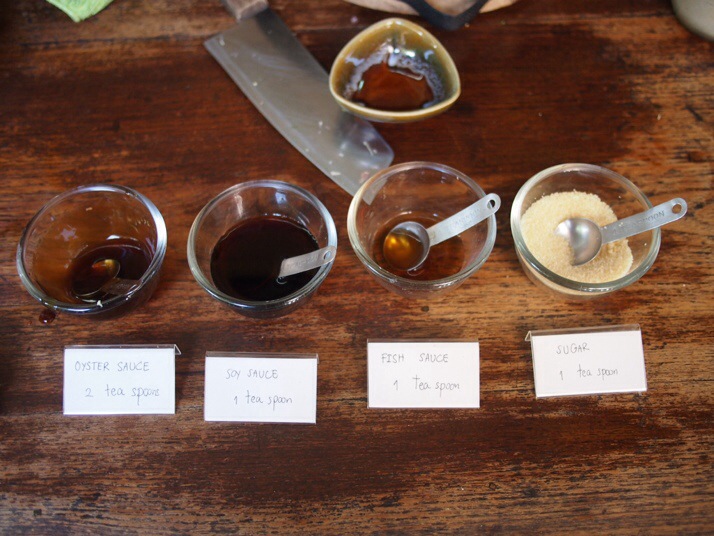 For each dish the sauce ingredients were set out with little labels for us to mix our own
For each dish the sauce ingredients were set out with little labels for us to mix our own
Stuffed cucumber soup
We were intrigued when we saw this on the menu and not quite sure what to expect. It turns out that cooked cucumber is actually pretty good! Everyone prepared and stuffed their own cucumbers, but as they were all cooked together we had to carve a distinguishing mark into the side of each piece.
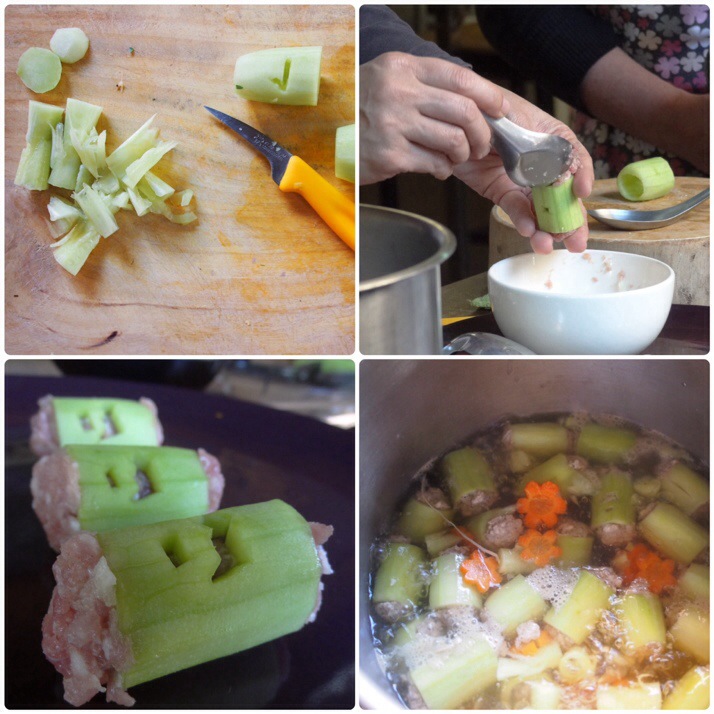 Julie’s hollowed out cucumbers marked with a ‘J’, stuffing them with the seasoned pork mince, Andrew got a bit patriotic when marking his cucumbers, cooking the soup
Julie’s hollowed out cucumbers marked with a ‘J’, stuffing them with the seasoned pork mince, Andrew got a bit patriotic when marking his cucumbers, cooking the soup
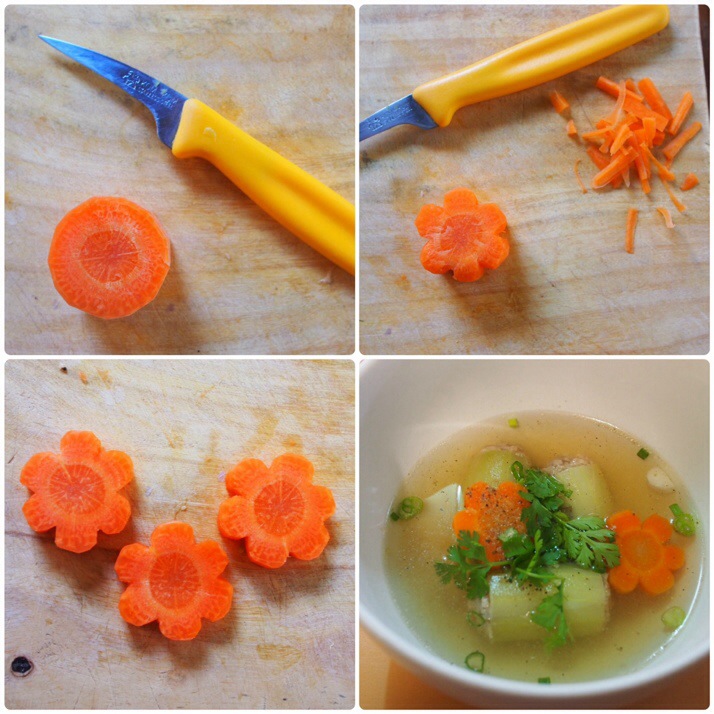 Anyone who’s eaten in a Thai restaurant will know that dishes are often garnished with carved vegetables. We got to try our hand at making very simple carrot flowers to be cooked in the soup along with the stuffed cucumbers
Anyone who’s eaten in a Thai restaurant will know that dishes are often garnished with carved vegetables. We got to try our hand at making very simple carrot flowers to be cooked in the soup along with the stuffed cucumbers
Fried bananas
Naturally the final lesson of the day was dessert!
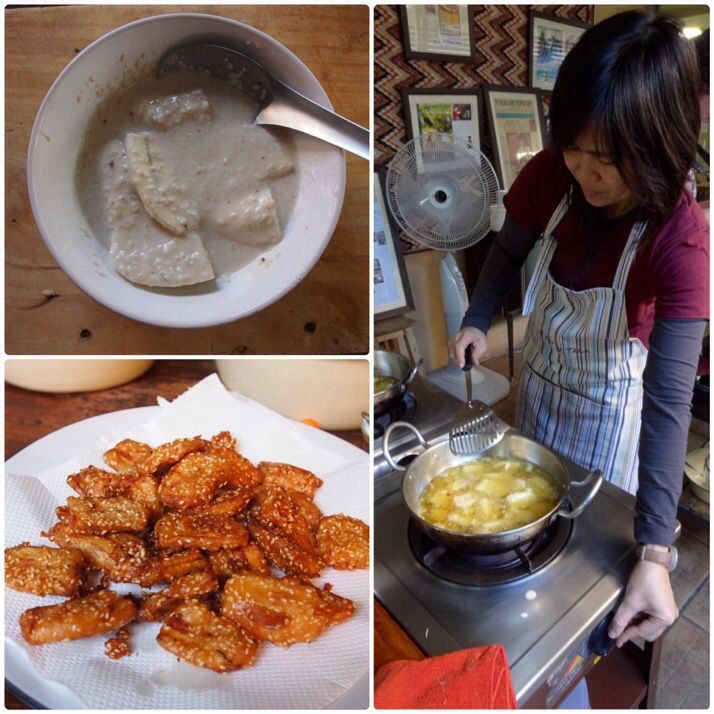 Fried bananas (clockwise from top left): batter ingredients, Yui deep frying them, sadly this wasn’t an individual portion…
Fried bananas (clockwise from top left): batter ingredients, Yui deep frying them, sadly this wasn’t an individual portion…
We were taken back to our apartment full, happy and keen to try out some of the recipes at home.

 two year trip
two year trip